Top 75 Players in March Madness History

Every March, the NCAA basketball tournament gives some of college hoops' best players their moment to shine — and, maybe, secure their ticket to the NBA or WNBA. The tourney also lets players who have flown under the radar to make a name for themselves, to hit big shots or lead their underdog squad on a deep run in the competition.
With March Madness in full swing, we have our eyes peeled for this year's heroes and stars. And while we're following the bracket-busting action, we're also taking a look at the Top 75 Players in Tournament History, as ranked by the writers and editors of Sports Illustrated.
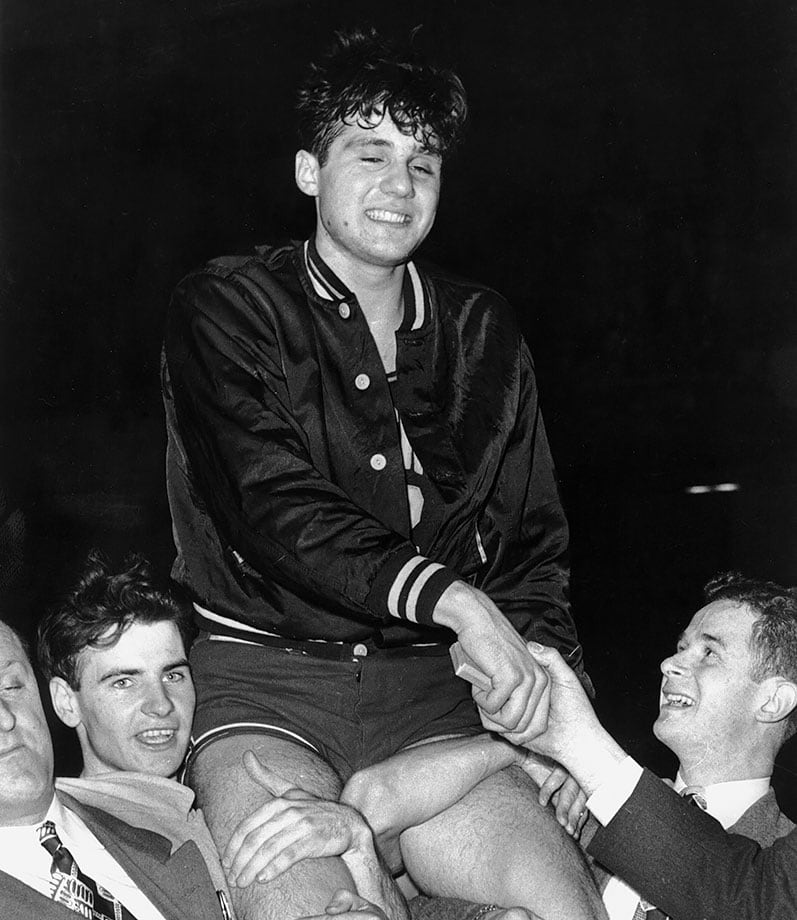
Most fans probably assume Bob Cousy was the star of Holy Cross 1947 NCAA championship team, but while Cousy was just a role-playing freshman, Kaftan was the one who scored 30 points against CCNY in the first round, and then went for 18 in the title victory over Oklahoma. Kaftan was named Most Outstanding Player, and the following year he averaged 13.7 points per game in the tournament while leading the Crusaders to a third place finish.
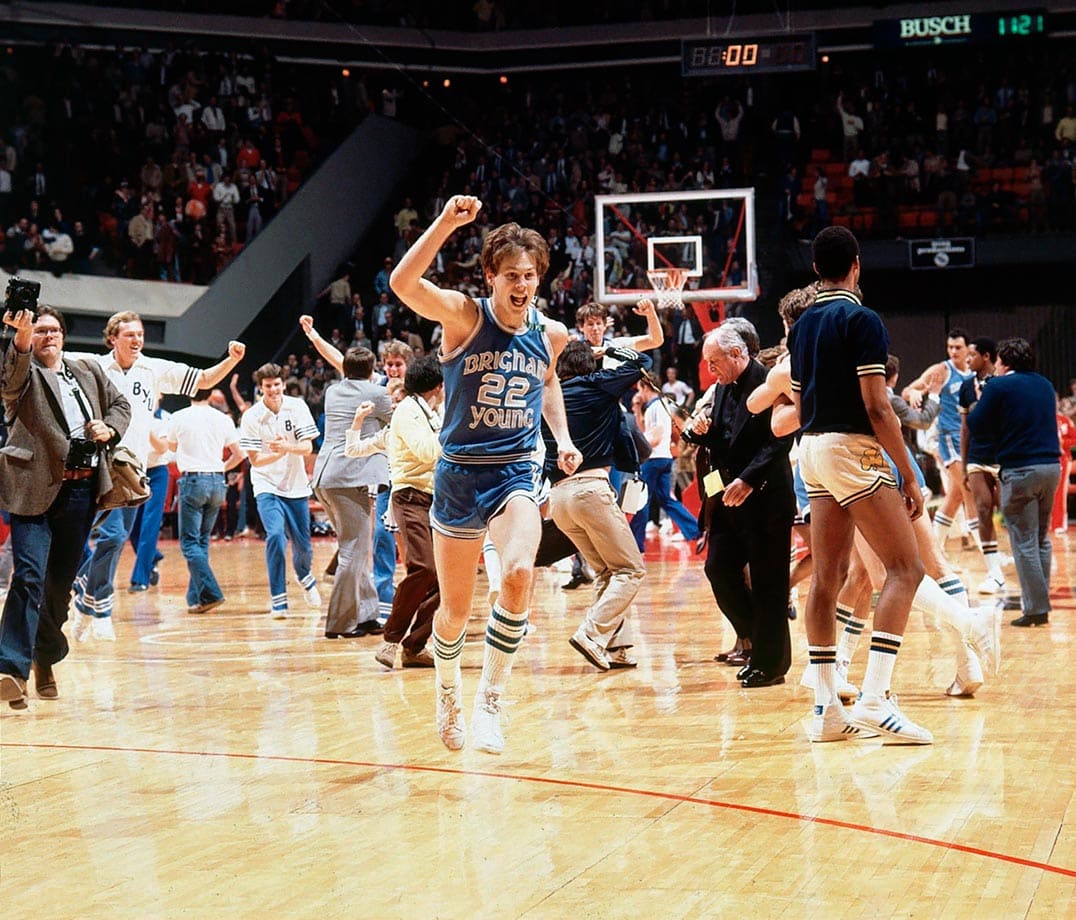
With a coast-to-coast drive, Ainge carried Brigham Young further into the NCAA tournament than the Cougars had ever gone. Trailing Notre Dame 50-49 with eight seconds remaining in the 1981 Sweet 16, Ainge took the inbounds pass the length of the court, sprinting past defenders to hit a layup to win the game. Ainge helped BYU make three NCAA tournaments in his college career, leading the Cougars in scoring each year. The 1981 first-team All-America and Wooden Award winner finished his career with a scoring average of 20.6 points per game.
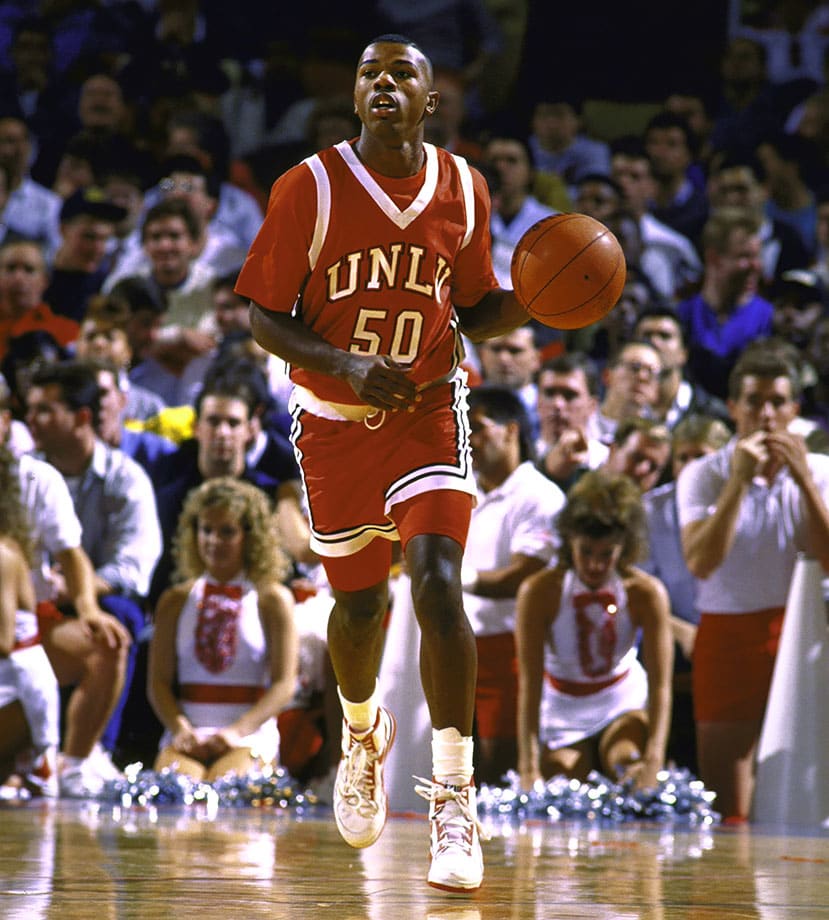
Though he only played three years at UNLV after transferring from the University of Portland, Anthony remains the school's career leader in assists and steals. His value to the 1990 NCAA champs and 1991 semifinalists was measured in far more than numbers. Anthony was the psychological, spiritual and vocal leader of one of the most dominant teams since the Wooden era. His value to this group was best demonstrated by how they played without him. The '91 Rebels lost in the Final Four to Duke because Anthony fouled out with a few minutes left. When he went out, UNLV fell apart him and lost 79-77.
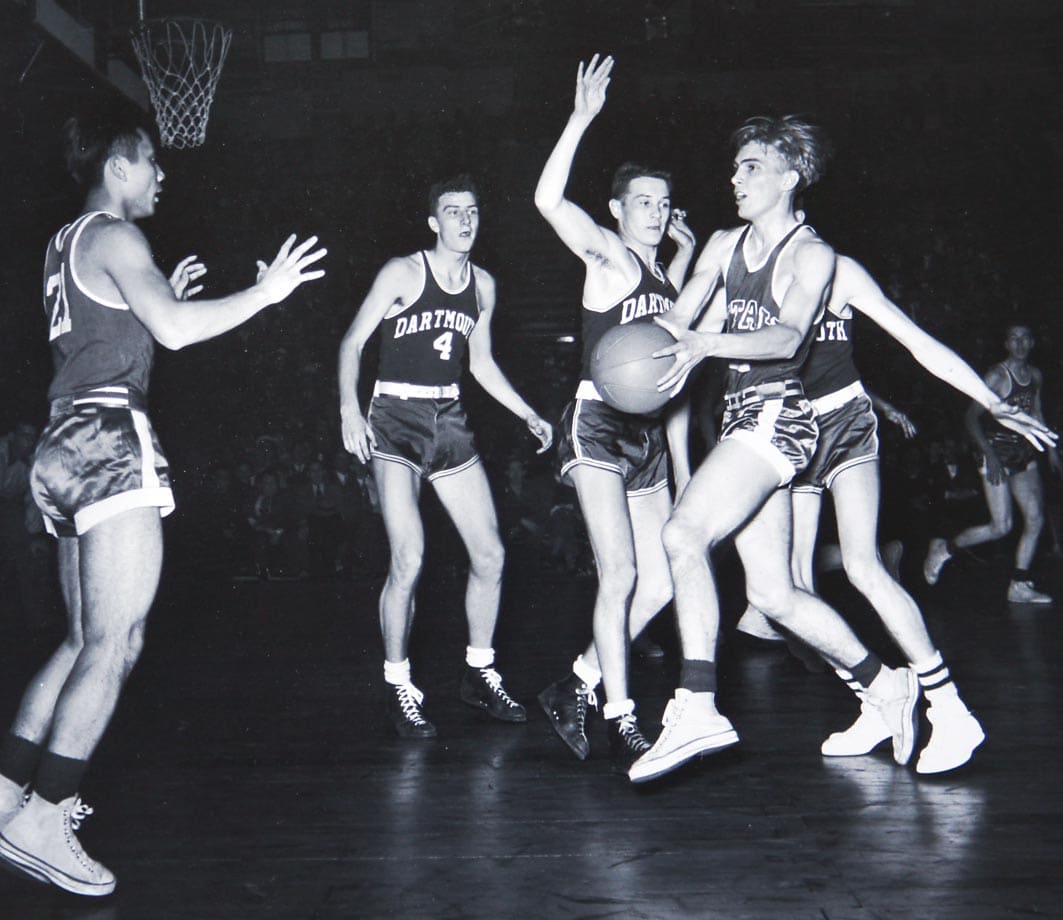
The most well known of Utah's "Blitz Kids," Ferrin was just a freshman when he scored 22 points in the 1944 NCAA final to lead the Utes to a victory over Dartmouth. Utah played in both the NIT and NCAA tournament that season, and it would be another 42 years before another freshman (Louisville's Pervis Ellison) was named the Final Four's Most Outstanding Player. Ferrin became Utah's only four-time All-America and he helped the school win the NIT in 1947.
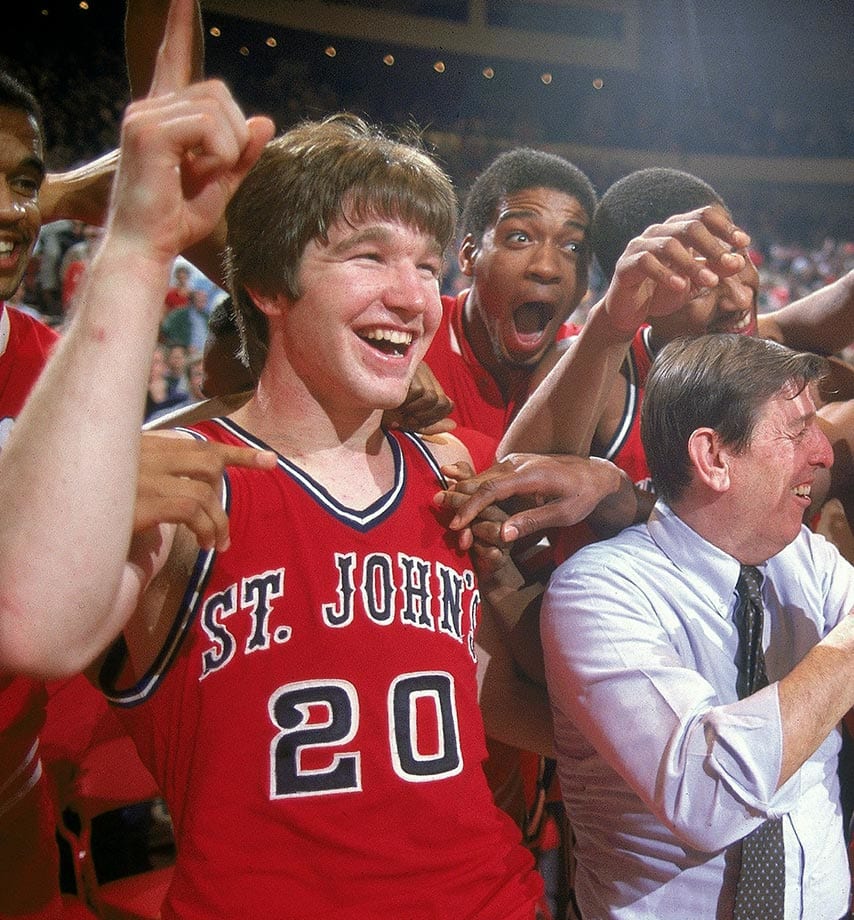
Growing up in Brooklyn, Mullin studied the games of Knicks stars Walt Frazier and Earl Monroe and honed his own skills by heading up to Harlem and the Bronx to play against the best players in New York. Mullin developed into the 1985 John Wooden Award winner and became the school's all-time leading scorer. The three-time Big East Player of the Year led the Red Storm to the Sweet 16 in 1983 and the Final Four in 1985.
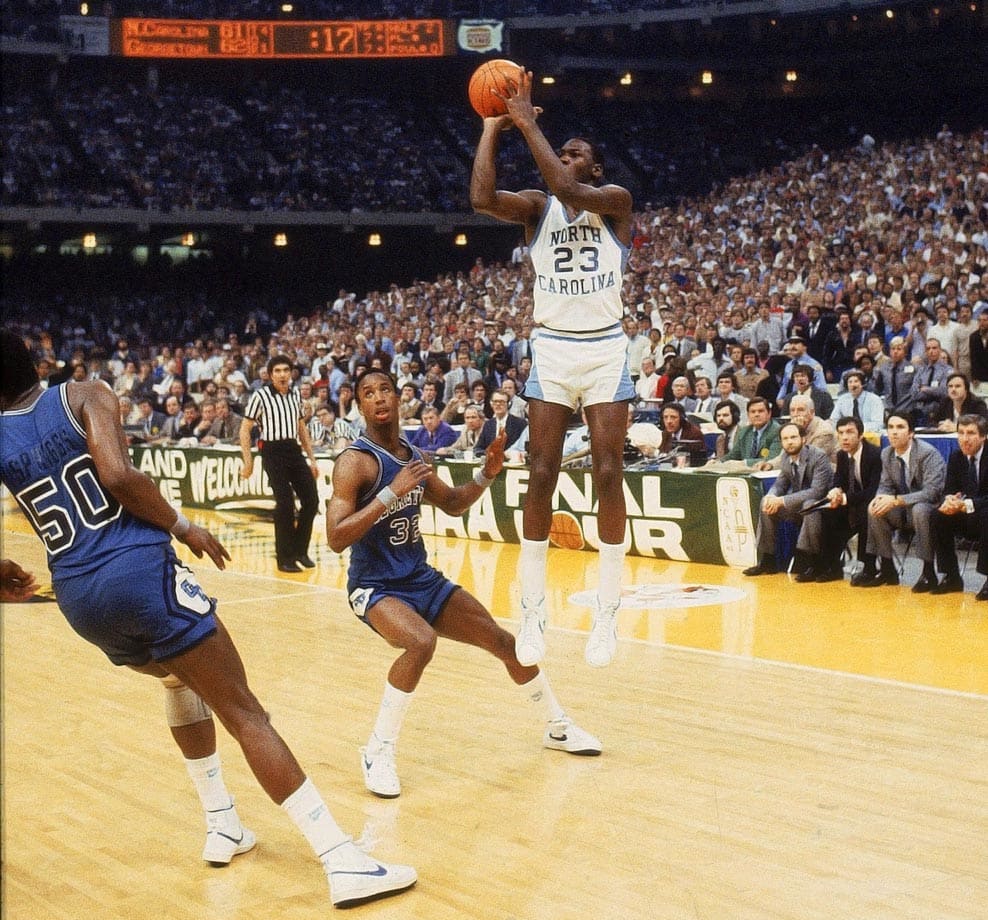
Though Jordan was perhaps the fourth-best player on the 1982 NCAA championship team, he hit the game's most important shot when he sank a jumper from the left wing with 17 seconds remaining to give the Tar Heels a 63-62 victory over Georgetown. He was the ACC's Freshman of the Year, and he followed up the next two seasons with two first-team All-America selections and Naismith and Wooden awards his junior year.
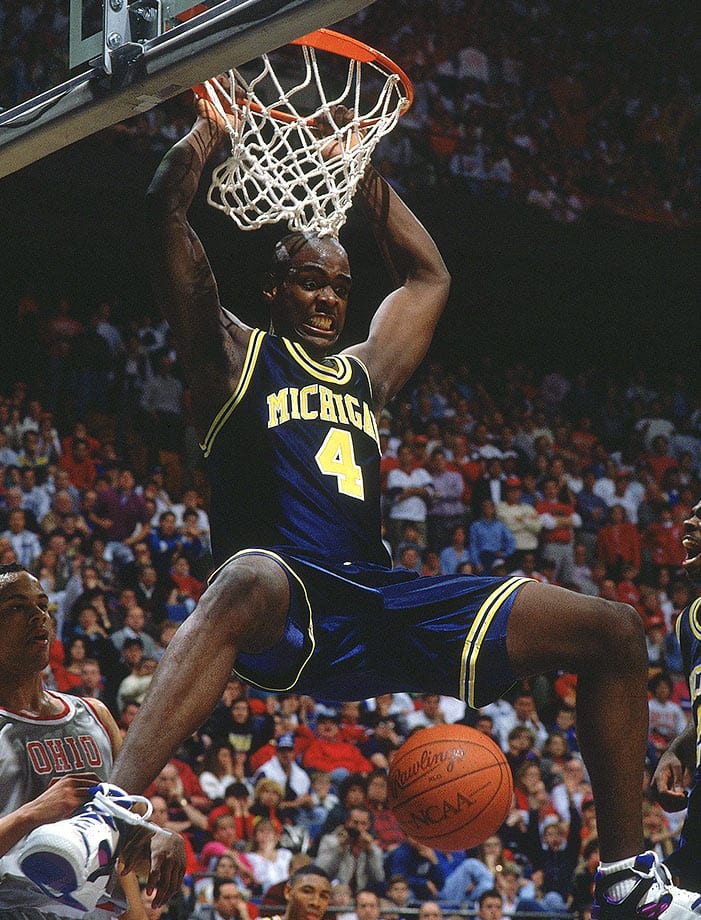
Webber's legacy at Michigan is more defined by his infamous timeout when the Wolverines didn't have any in the championship game against North Carolina. Webber recorded a double-double in the Elite Eight, Final Four and championship game of the 1992 NCAA tournament and scored 23 points with 11 rebounds in the 1993 title game.
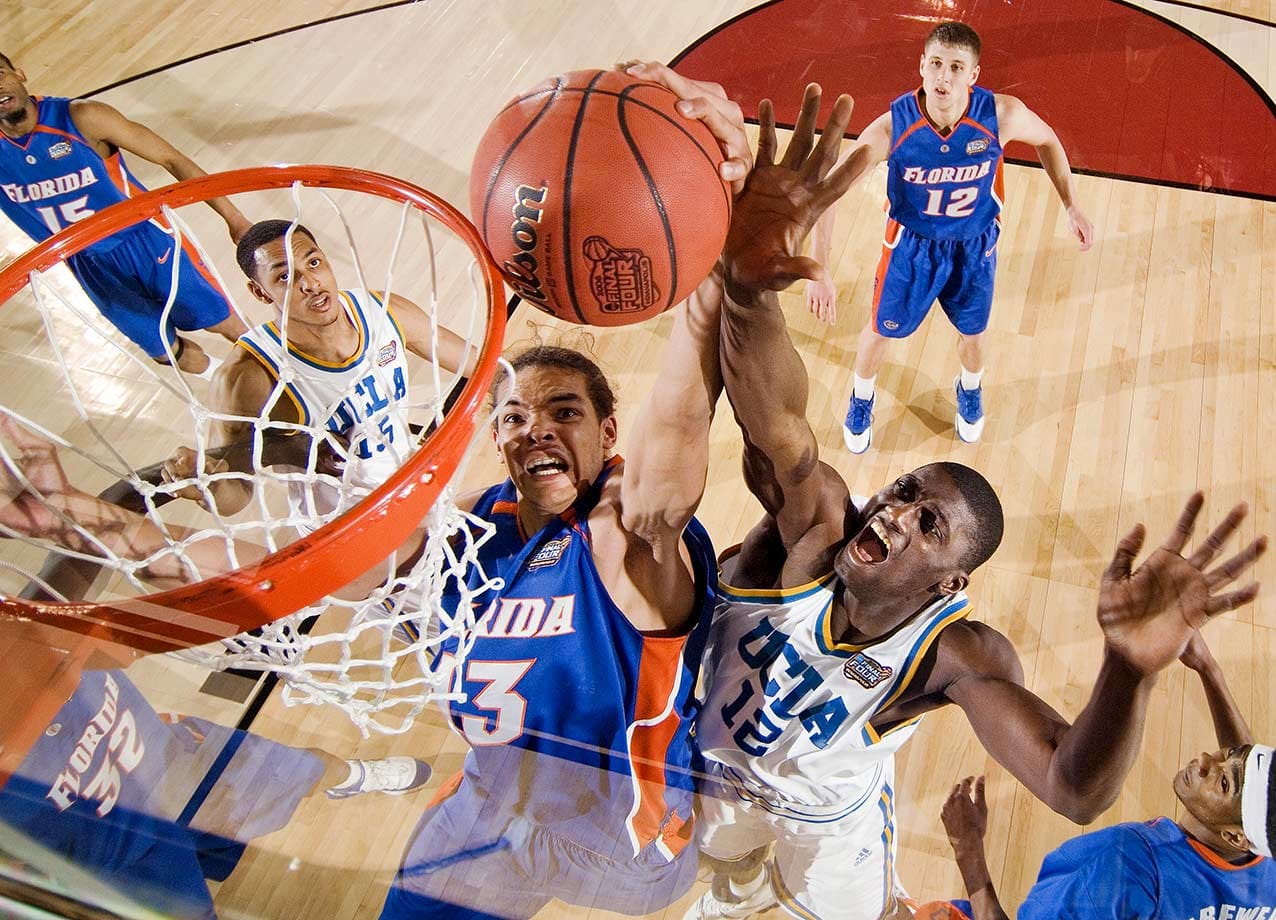
This 6-11 center rose from a virtual unknown to the Most Outstanding Player of the 2006 NCAA tournament as a sophomore, leading Florida to a 73-57 victory over in the title game with 16 points nine rebounds and six blocks. With nearly the full squad returning, the Gators won a second championship in 2007 as Noah garnered All-America honors after averaging 12.0 points and 8.4 rebounds. Florida became the first repeat national champions since Duke in 1992.
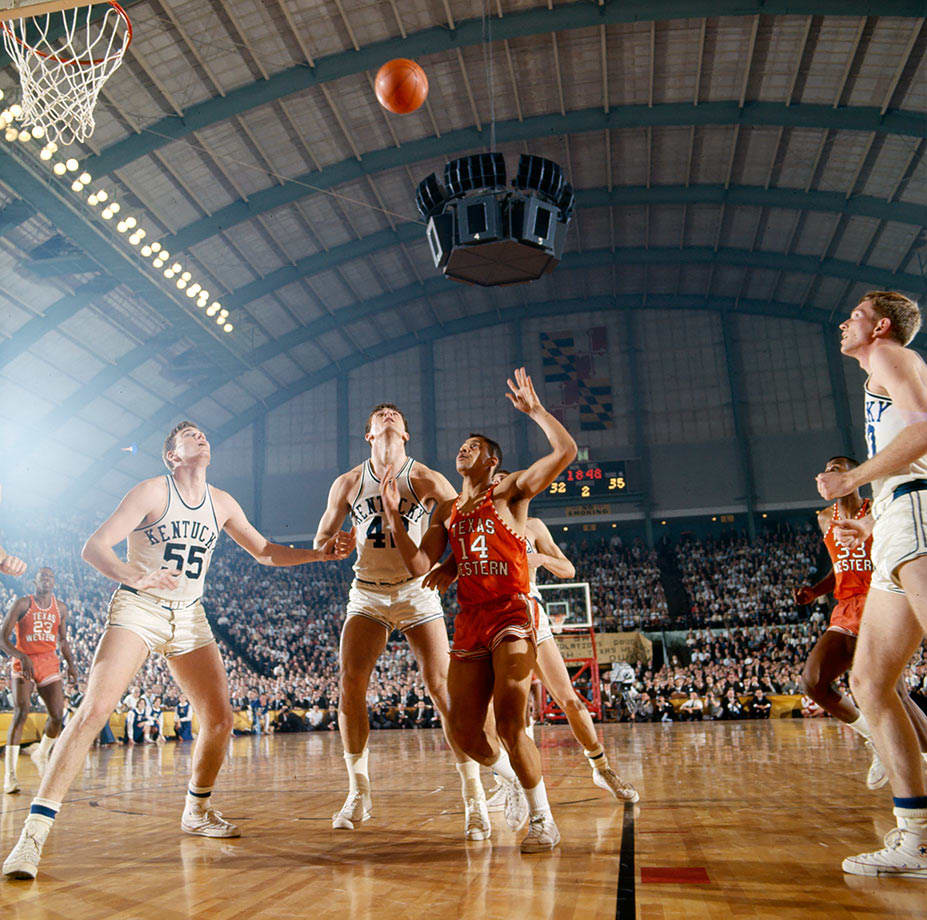
In a game that went well beyond basketball, Hill was the star. Playing against an all-white Kentucky team, Texas Western became the first squad with an all-black starting five to win the 1966 national championship, beating the Wildcats 72-65. Hill led all scorers with 20 points and set the tempo for the Miners' win early with steals on Kentucky's Louie Dampier and Tommy Kron. Hill dominated games even without a historically significant spotlight, scoring 18 points with 11 rebounds in Texas Western's Final Four win over Utah and 22 points in an overtime victory against Kansas in the Elite Eight.
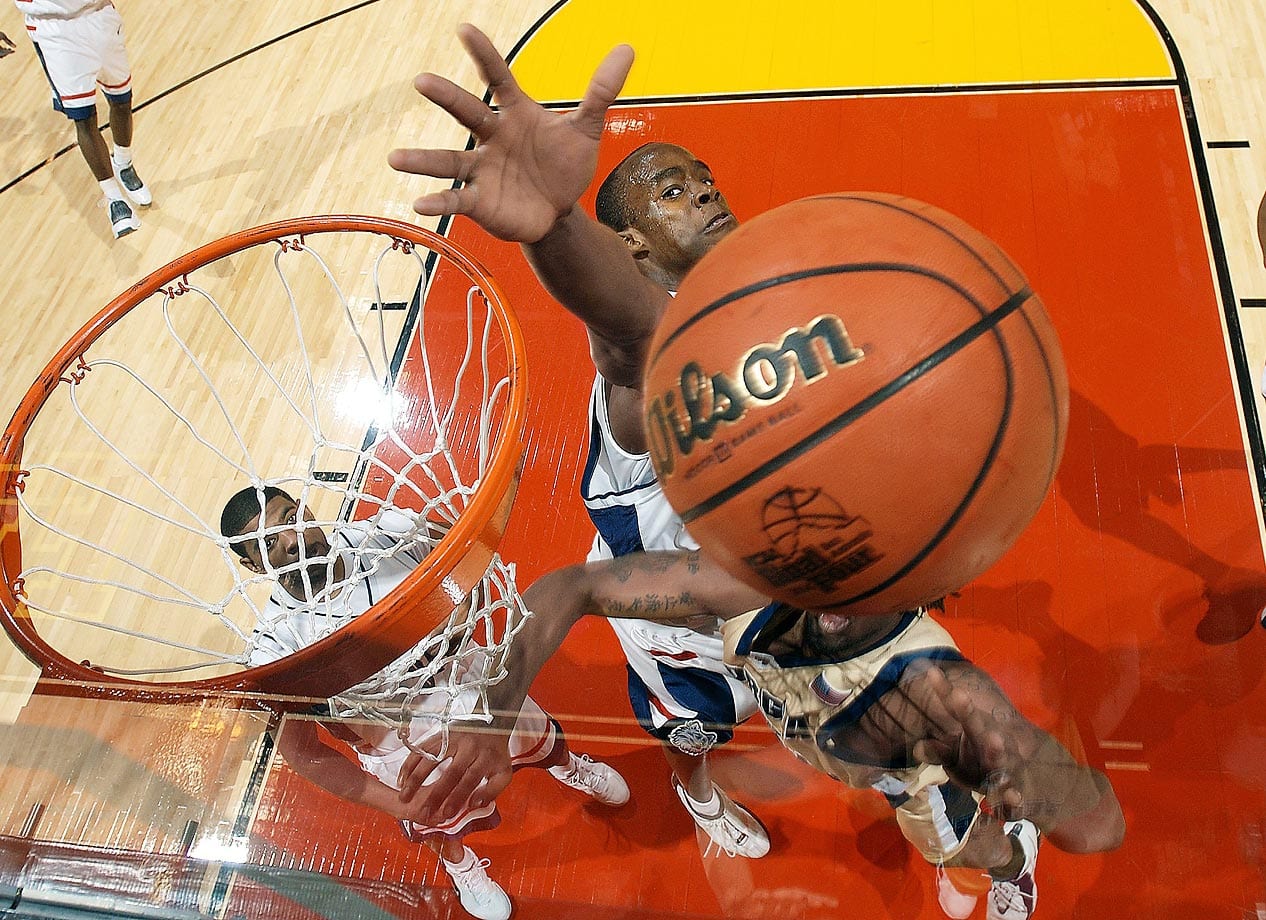
One of the great scholar-athletes in recent memory, Okafor was the dominant defensive force that helped deliver UConn coach Jim Calhoun his second NCAA title in 2004. As a senior, Okafor led the nation in blocks and graduated as the school's all-time leading shot blocker. He was also named Big East Player of the year, national defensive player of the year, and an academic All-America.
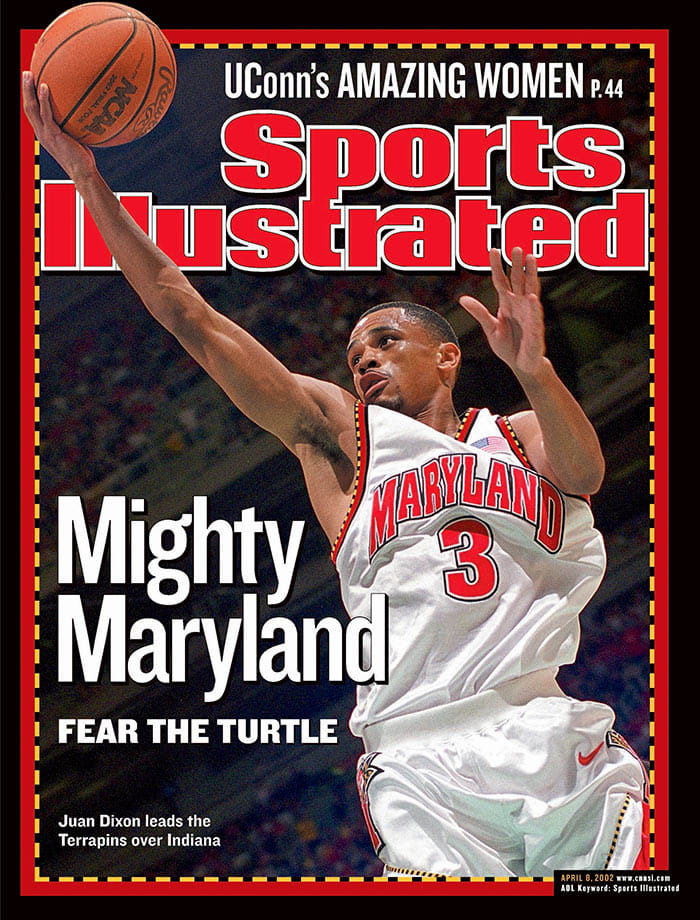
Dixon, a short, skinny, overlooked recruit from Baltimore, led the Terrapins to back-to-back Final Fours and the 2002 national championship. Dixon was named the NCAA tournament's Most Outstanding Player during that championship run, scoring 155 points over the six games to give Maryland its first national title in school history. He played an integral role in the Terrapins' run to the Final Four in 2001, too, scoring 17 points in an upset of No. 1-seed Stanford in the Elite Eight. As a senior, Dixon averaged 20.4 points, 4.6 rebounds and 2.6 steals, was named first-team All-America and was the ACC's Co-Player of the Year.
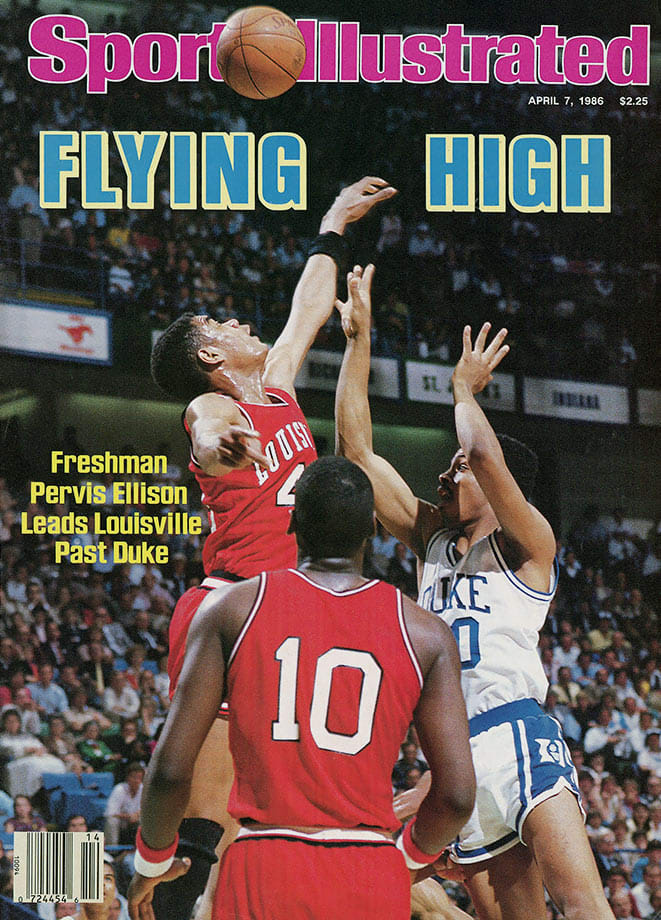
Ellison lived up to his "Never Nervous Pervis" nickname by leading the Cardinals to the 1980 NCAA championship. He had 25 points and 11 rebounds in the final win over Duke, becoming the first freshman in tournament history to be named the Final Four's Most Outstanding Player. Ellison averaged 13.1 points and 8.2 rebounds that season. Ellison also scored 70 points in three during the 1988 NCAA tournament, and was named first team All-America in 1988-89 when he averaged 17.6 points and 8.7 rebounds.
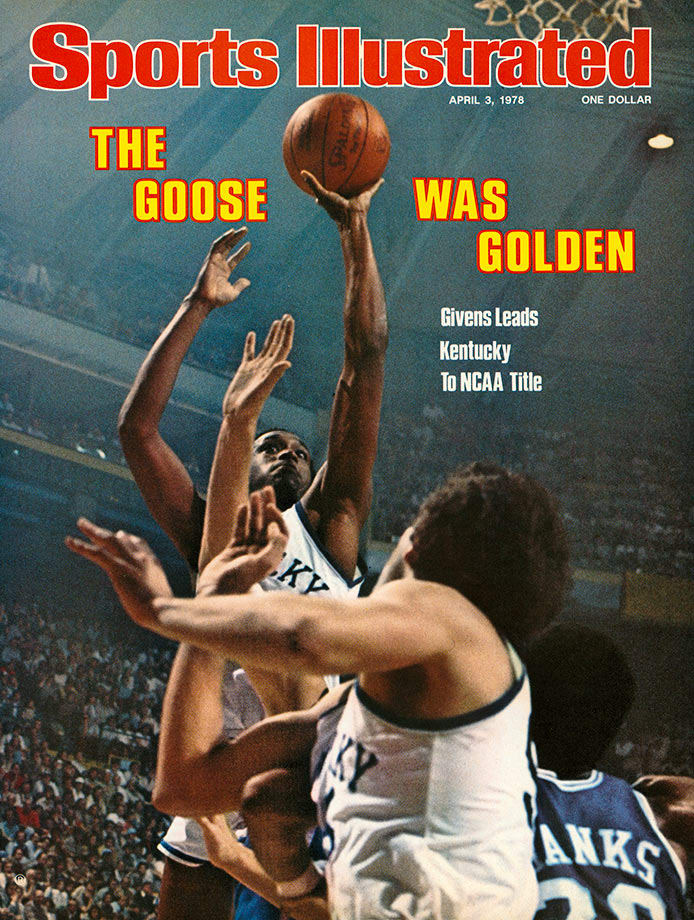
Known as "Goose", Givens, turned in his best performance in the biggest game of his career as he carried the Wildcats to the national championship in 1978. Kentucky beat Duke 94-88, ridding Givens' 41-point, eight-rebound performance to victory. He was named the Most Outstanding Player and won the Helms Foundation Player of the Year. Givens scored more than 18 points per game in three of four seasons and his 2,038 career points are the third most in Kentucky history.
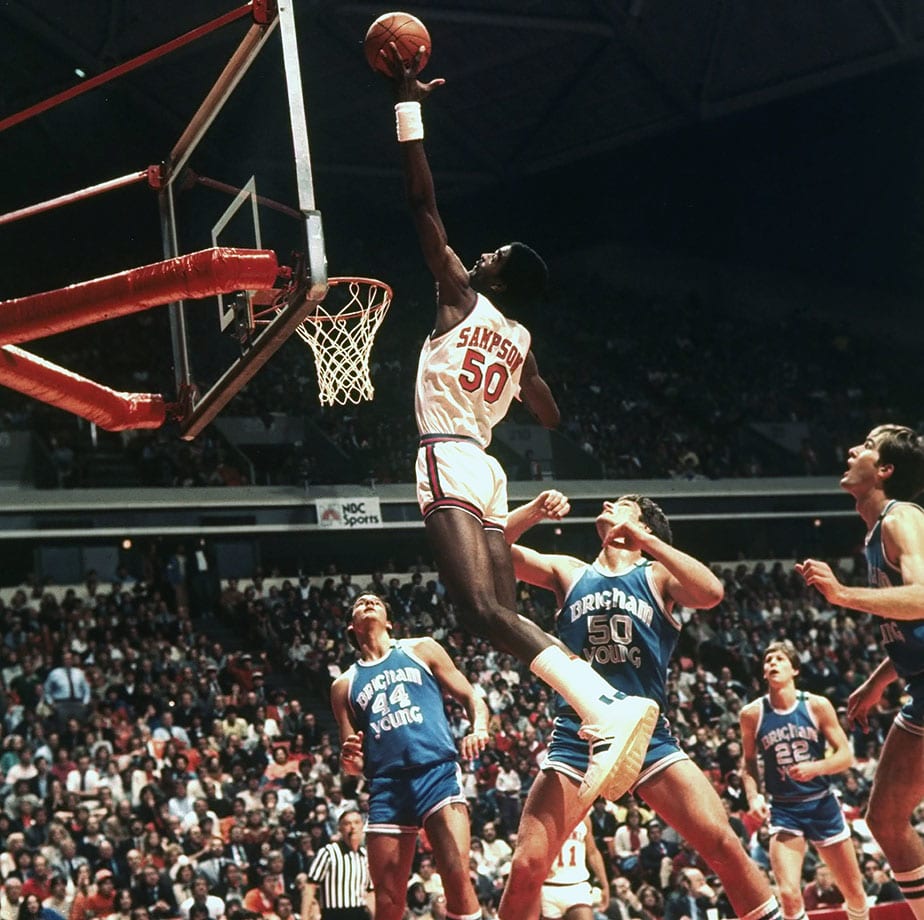
A huge star at Virginia, Ralph Sampson made five SI covers during his college career. The three-time Naismith and Wooden award-winner led the Cavaliers to an NIT title his freshman year and a Final Four the year after that, averaging a double-double for all four college seasons. His 84 career double-doubles are the second most all-time.
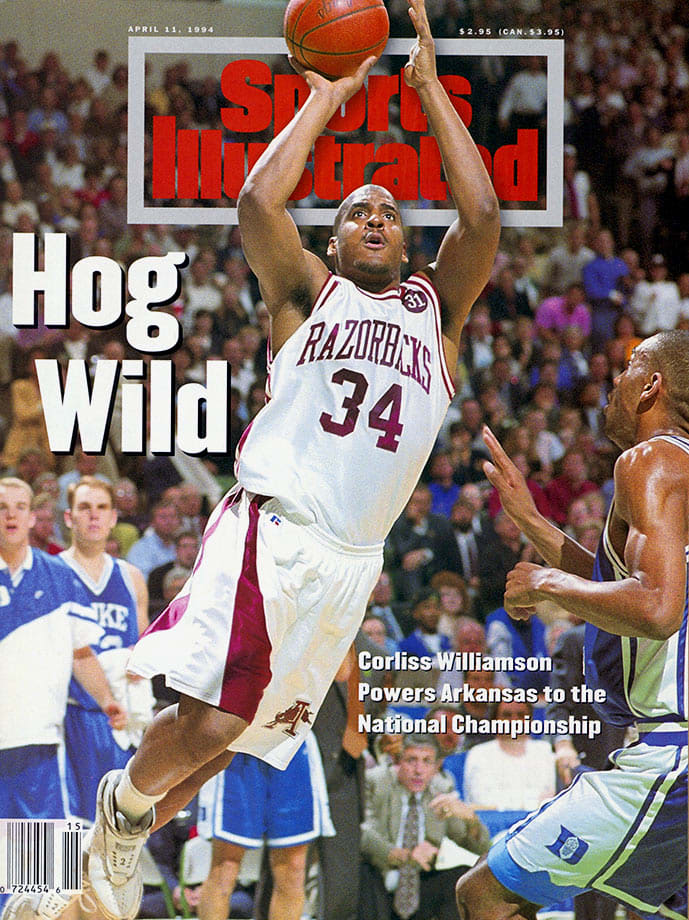
A player who shined brightest in the spotlight of March, Williamson averaged more points in the NCAA tournament than he did in the regular season for each of his three postseason runs with Arkansas. Williamson's clutch play lead the Razorbacks to the 1994 national championship. He scored 23 points in the title game to beat Duke, earning Most Outstanding Player honors. Williamson got Arkansas back to the championship game again in 1995, this time falling to UCLA.
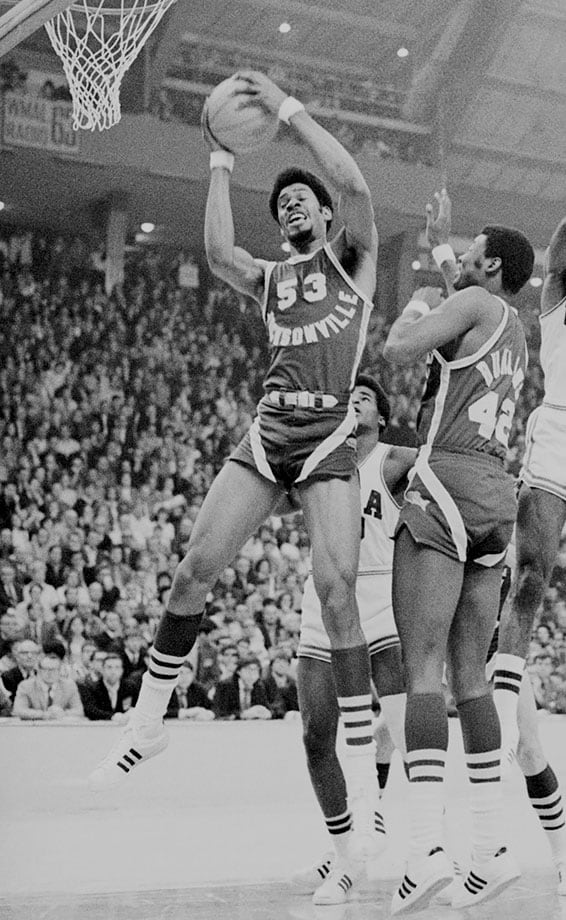
The top rebounder in NCAA history, Gilmore is one of just five players to average 20 points and 20 rebounds in his career. After spending his first two years at Gardner-Webb Junior College, Gilmore arrived at Jacksonville to lead the Dophins to the 1970 national championship game. Gilmore scored 24 points and grabbed 20 rebounds a Sweet 16 win over Kentucky and had 29 points and 21 rebounds in a Final Four victory over St. Bonaventure.
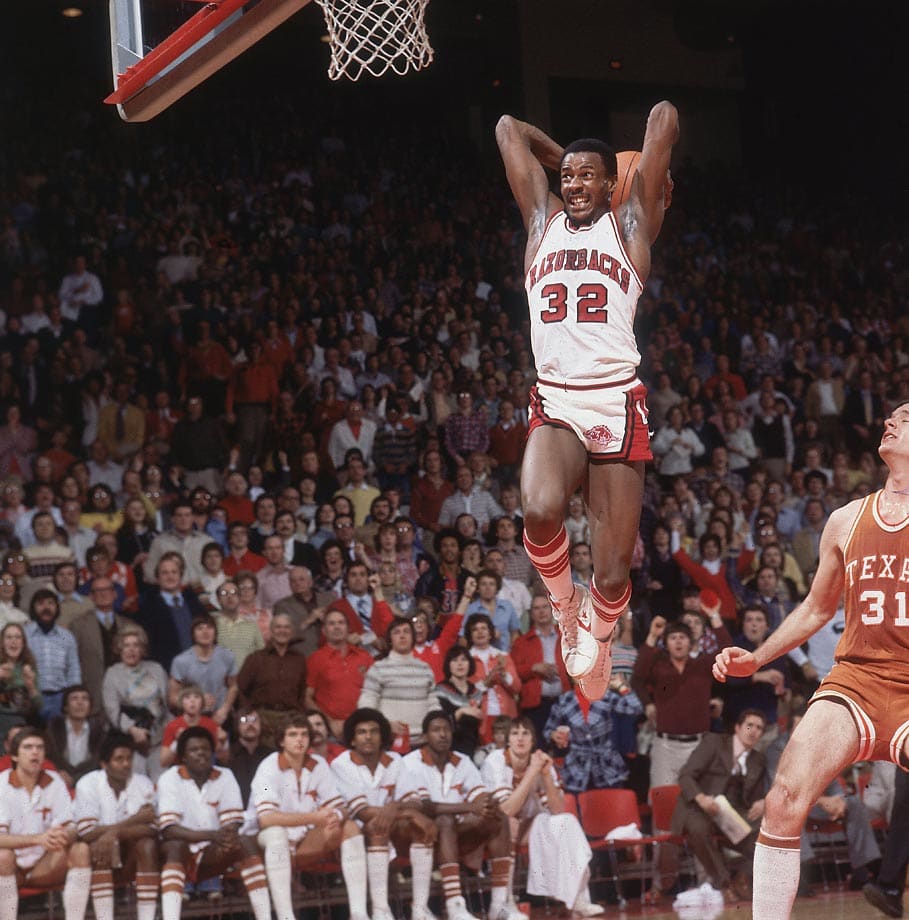
Along with Marvin Delph and Ron Brewer, Moncrief brought Arkansas back from nearly two decades of mediocrity. The Triplets, as the trio was known, got the Razorbacks into the NCAA tournament in 1977 for the first time since 1958. Moncrief contributed 17.3 points and 7.7 rebounds per game as Arkansas went 32-4 in 1977-78, making its first Final Four in school history. Moncrief scored 21 points and grabbed 11 rebounds to lead the Razorbacks past UCLA in the Sweet 16. A first-team All-America in 1979, Moncrief averaged 22.0 points and 9.6 rebounds to propel Arkansas to the Elite Eight. Arkansas' three NCAA tournament appearances with Moncrief began a streak of nine straight years and 22 of 25 in which the Razorbacks reached the tournament.
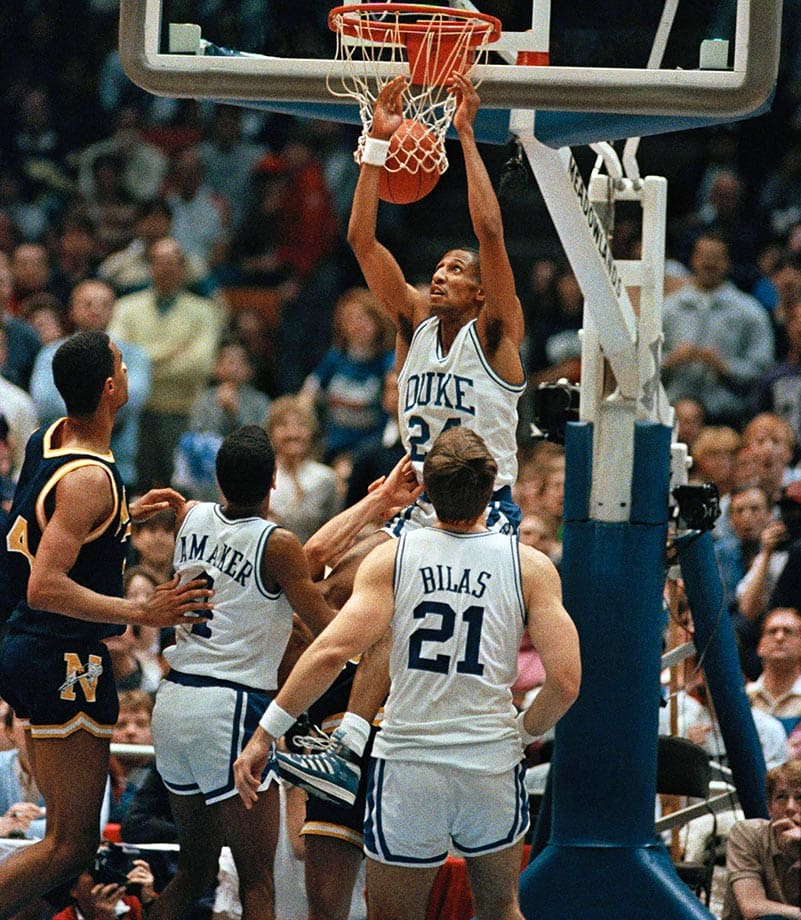
After just three NCAA tournament bids in 17 years, a stretch of disappointment that extended into Dawkins' freshman year, the two-time first-team All-America sparked a major turnaround that has continued nearly unabated since. Following an 11-17 record in 1982-83, when Dawkins averaged 18.1 points per game, Duke won 84 of its 105 games over the next three seasons, capping off Dawkins' career as a Blue Devil with a championship game appearance. Duke made the tournament each of Dawkins' final three years and Dawkins made two All-American first-teams in addition to winning the 1986 Naismith College Player of the Year. That season he brought Duke to the final of the NCAA tournament, scoring 24 points in a 72-69 loss to Louisville.
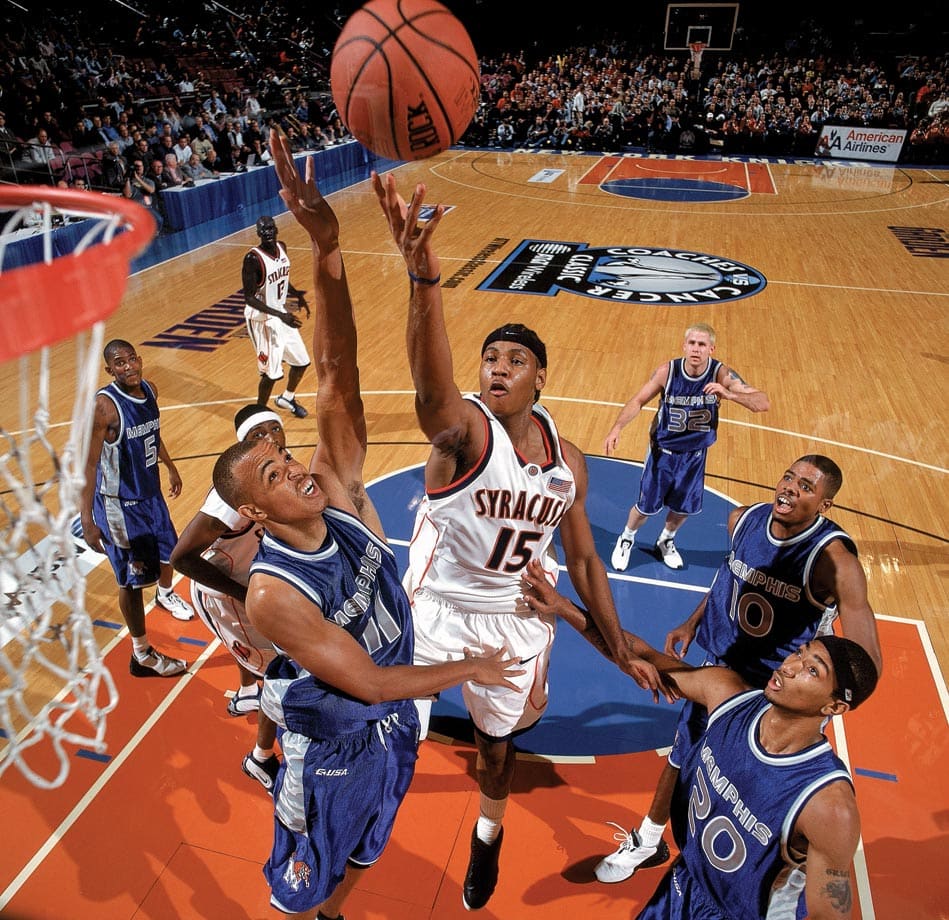
In 2003, Anthony led Syracuse to the 2003 national championship, the first in program history, averaging 22.2 points and 10.0 rebounds. He had 33 points and 14 rebounds in a regional final win over Texas. But he was at his best in the title game, finishing with 20 points, 10 rebounds and seven assists as Syracuse defeated Kansas 81-78. Anthony was the first star of the one-and-done era. After he was named the tournament's Most Outstanding Player as a freshman, he was selected third overall in the 2003 NBA draft.
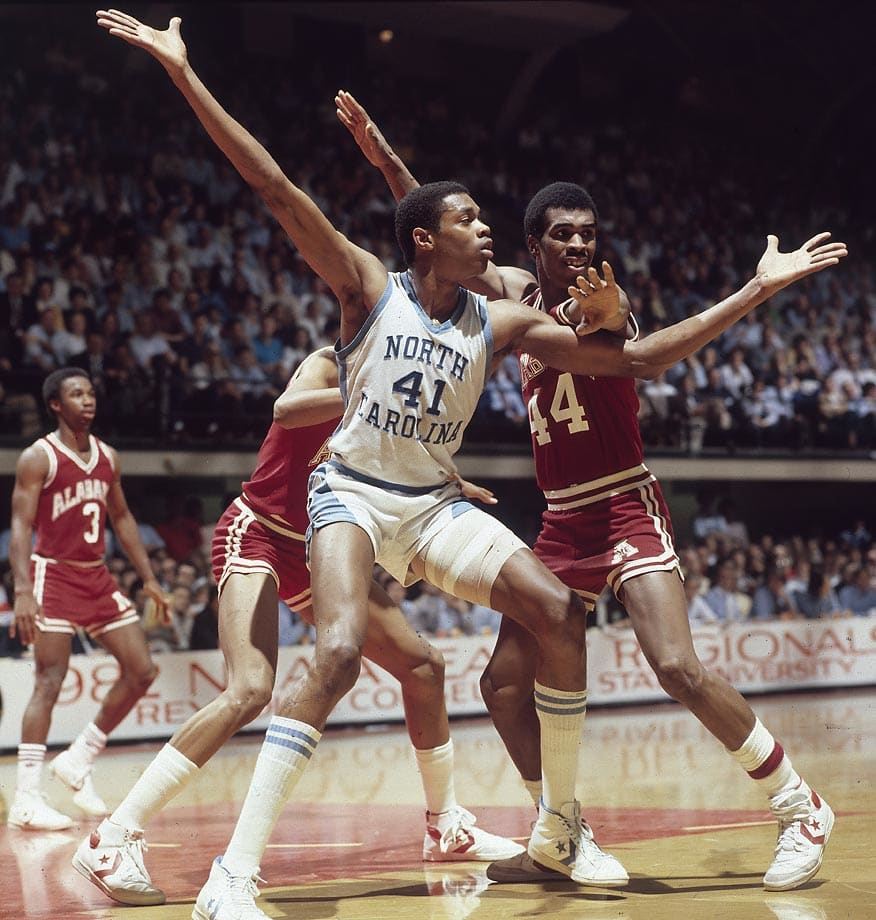
Before there was Jordan and Pippen there was Jordan and Perkins, a dynamic duo powering Dean Smith's Tar Heels. Sam Perkins arrived in Chapel Hill one year before Jordan, contributing nearly 15 points and eight rebounds per game as North Carolina reached the national championship game. With Jordan alongside Perkins and James Worthy, the Tar Heels got their national title, the first for Smith. They reached the Elite Eight and the Sweet 16 the following two years. Perkins remains North Carolina's all-time leader in rebounds with 1,167 career boards to go along with his 2,133 career points. The two-time first-team All-America was drafted fourth overall in 1984, one spot behind Jordan.
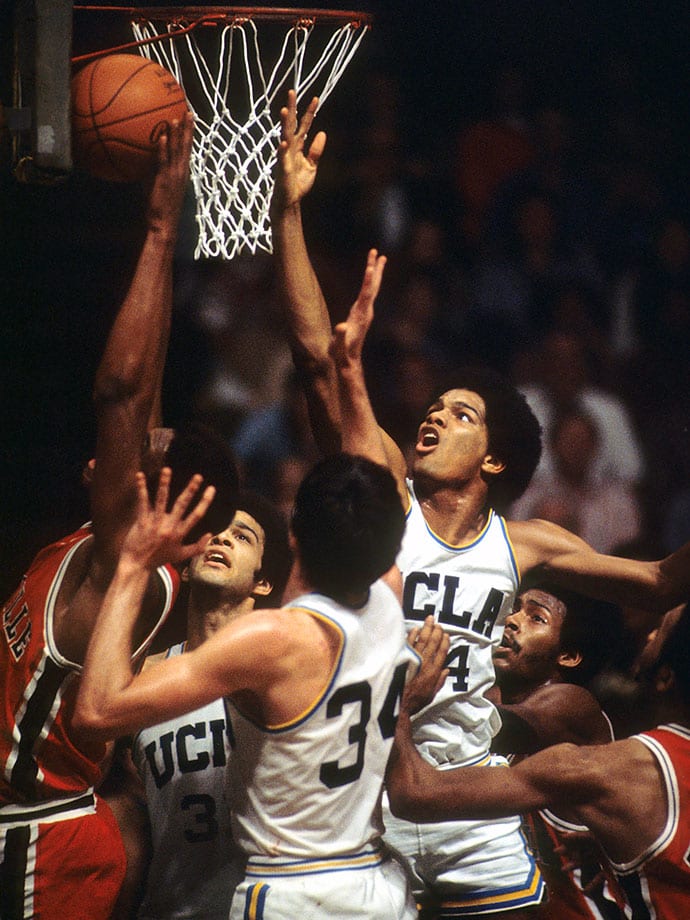
Johnson helped ensure that coach John Wooden went out with a title, leading UCLA to the 1975 national championship. When his son Kris also won a national championship with UCLA 20 years later, the pair became the only father-son duo to win NCAA men's basketball championships with same school. Johnson also played in two other Final Fours and won the Naismith Award and the inaugural John Wooden Award in 1977 when he averaged 21.4 points and 11.1 rebounds.
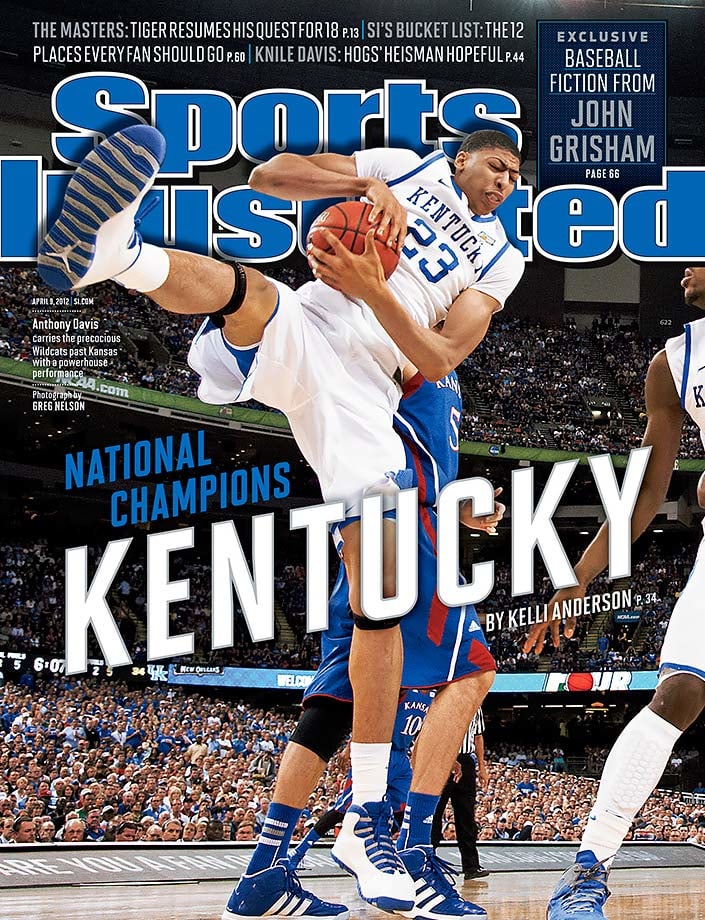
Davis had arguably the most dominant six-point performance in the history of the NCAA tournament. That's all he scored in the 2012 final against Kansas, but he added 16 rebounds, six blocks, five assists and three steals as he was named the Final Four's Most Outstanding Player. During his one and only season at Kentucky, Davis led the team in points (14.2), rebounds (10.4) and blocks (4.65) while shooting 62.3 percent from the field. He became the No. 1 overall pick in the NBA draft.
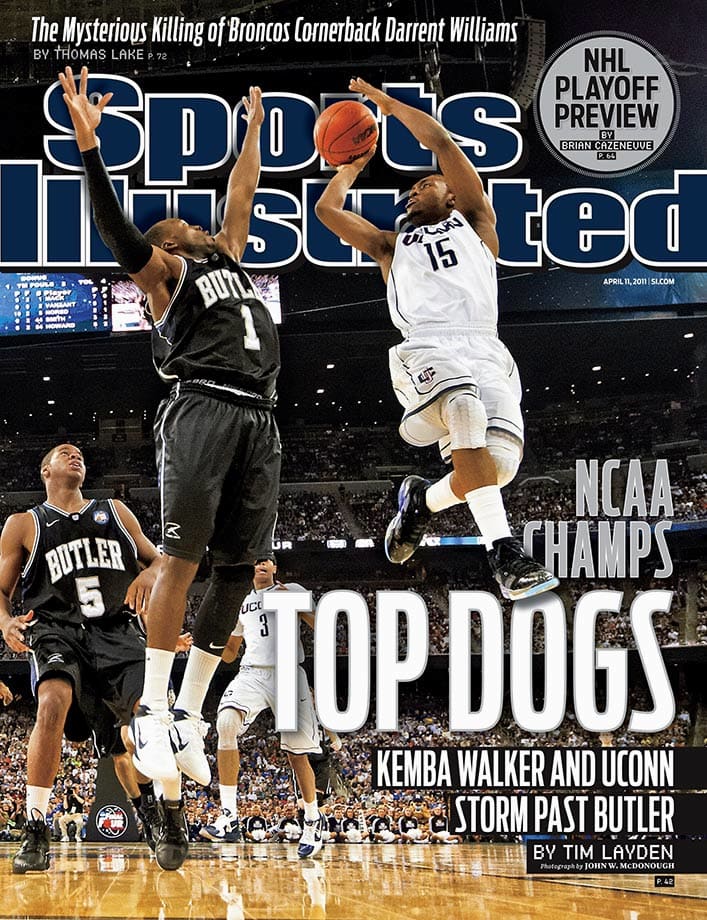
Walker's heroics propelled Connecticut to arguably the most impressive postseason run in college basketball history. First he led the No. 9 Huskies to five wins in five days to capture the Big East tournament championship. Walker scored 130 points in that tournament, including the game winner at the buzzer to beat Pittsburgh in the quarterfinals. Then, scored 141 points in six NCAAA tournament games as Connecticut won the national championship. That season, Walker averaged 23.5 points, 5.4 rebounds and 4.5 assists, he was named first team All-America and won the Bob Cousy Award as the nation's top point guard.
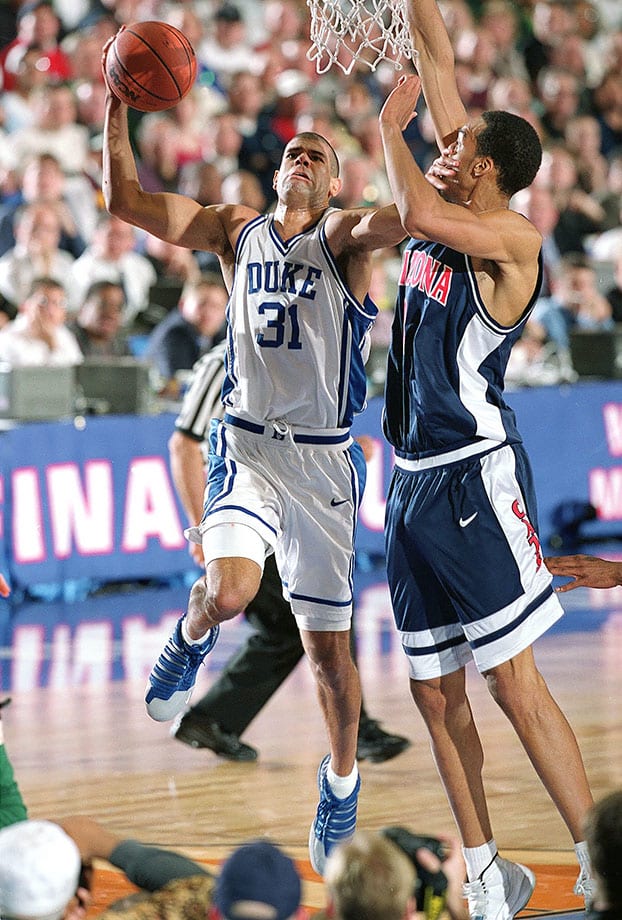
Battier excelled in many areas on and off the court, but most of all, Battier was a winner. The forward won 131 games, the most in ACC history, and his Blue Devils teams never failed to reach at least the Sweet 16. He had 18 points and 11 boards in Duke's 82-72 win over Arizona in the 2001 national championship game. Battier did a little bit of everything for Duke, scoring 19.9 points with 7.3 rebounds, 2.1 steals and 2.3 blocks per game along with a 41.9 three-point percentage his senior year. The three-time NABC Defensive Player of the Year could lock down opponents without fouling (2.0 career fouls per game). He capped off his senior season by winning the Naismith and Wooden awards and a national title. Battier averaged 22.5 points and 10.2 rebounds during Duke's 2001 title run.
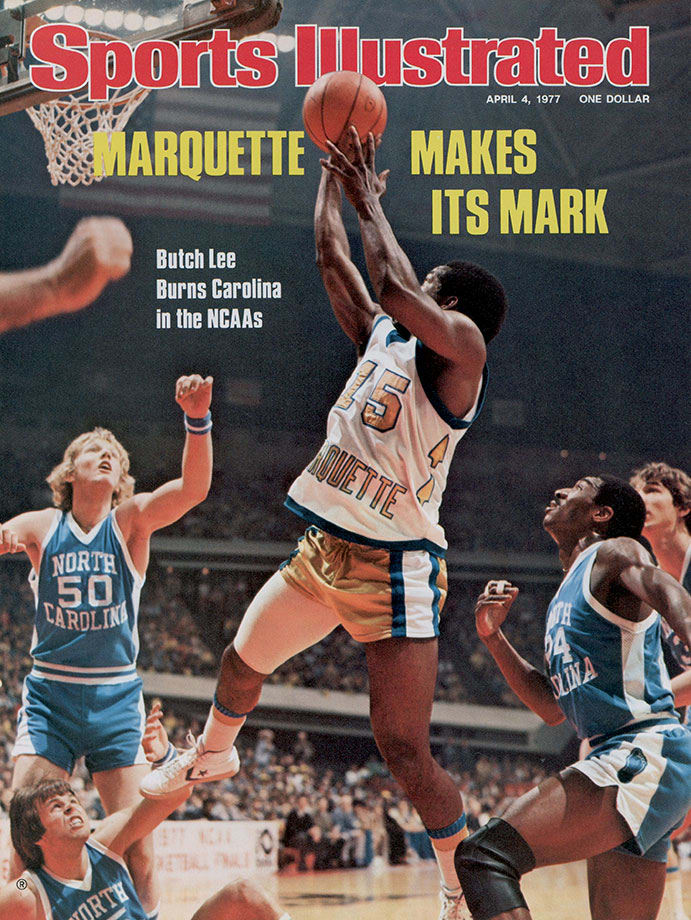
The only player to win championships in the NCAA, the NBA and the BSN — the National Superior Basketball League of Puerto Rico —Lee provided crucial scoring in Marquette's run to its 1977 national championship. He averaged 19.6 points per game that season, but his most memorable contribution was a pass. With the score tied at 49 against North Carolina-Charlotte in the Final Four, Lee fired a full-court pass to Jerome Whitehead for a game-winning basket at the buzzer. The Warriors (they would not adopt the nickname Golden Eagles until 1994) went on to beat North Carolina in the final as Lee scored 19 points to earn the tournament's Most Outstanding Player Award. The native Puerto Rican won the Naismith College Player of the Year Award in 1978.
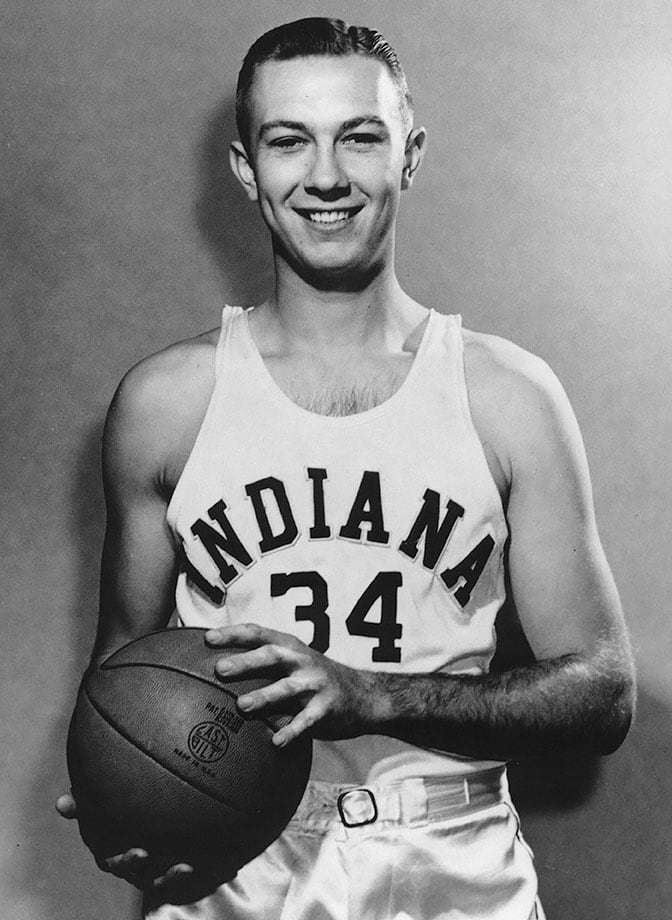
Schlundt was a beneficiary of fortunate timing in 1951 as he was immediately eligible to play for the varsity due to a one-year suspension of the NCAA rule banning freshman from playing because of the Korean War. After scoring six points in his debut, Schlundt finished the year as the Hoosiers' leading scorer with 17.1 points per game. The experience he gained propelled Schlundt to become one of the top players in the nation the next year as he averaged 25.4 points and led Indiana to the 1953 national championship. Schlundt scored 30 points in a one-point win over Kansas in the final. He led the Hoosiers to another Big Ten title the next year and left Indiana as the school's all-time leading scorer. The three-time All-America's 23.3 career points per game is still second best in school history.
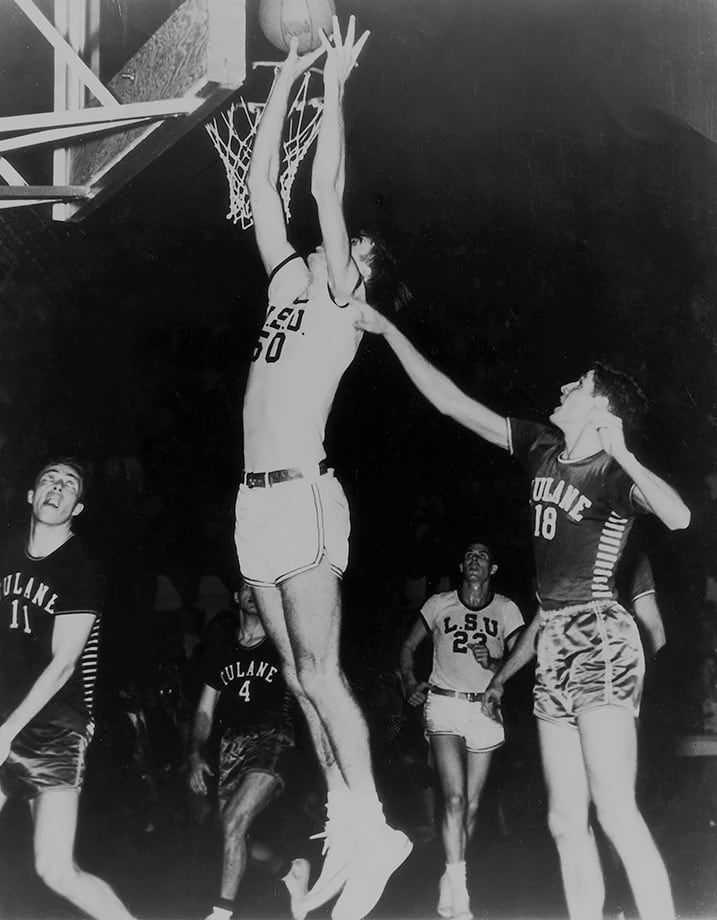
Cut from his high school's varsity team as a freshman and sophomore, Pettit was forced to develop his game on his own in his backyard. After becoming a starter as a junior, Pettit earned his way to LSU, where he led the SEC in scoring each of his three years on the varsity. Pettit was among the greatest basketball players in LSU history and ranks first in career rebounding average and third in scoring average. He led LSU to back-to-back SEC championships in 1953 and 1954. LSU reached the 1953 Final Four before losing to Indiana despite 29 points and 15 rebounds from Pettit. The Tigers returned to the Sweet 16 the next year.
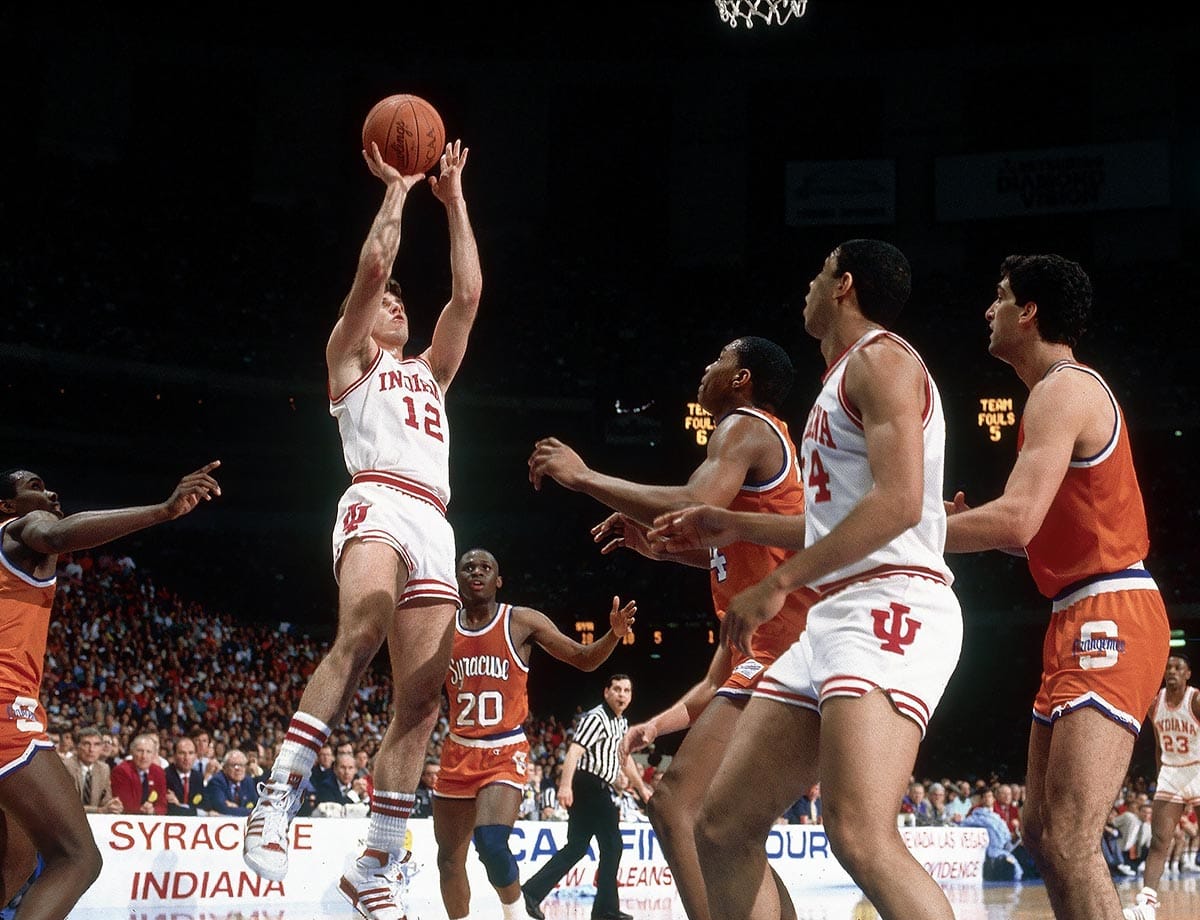
Alford scored a school-record 2,438 points in his career, none more memorable than the 23 he scored in the 1987 NCAA championship game win over Syracuse. It was the first season of the three-point line and Alford took advantage of it by burying 7 of his 10 attempts. That put the Hoosiers in position to win the game with one of the most memorable shots in tourney history, a baseline jumper by Keith Smart. After the game, Indiana coach Bob Knight said Alford got "more out of his ability offensively than anybody I've ever seen." For a kid who grew up in Indiana, that's as good as it gets.
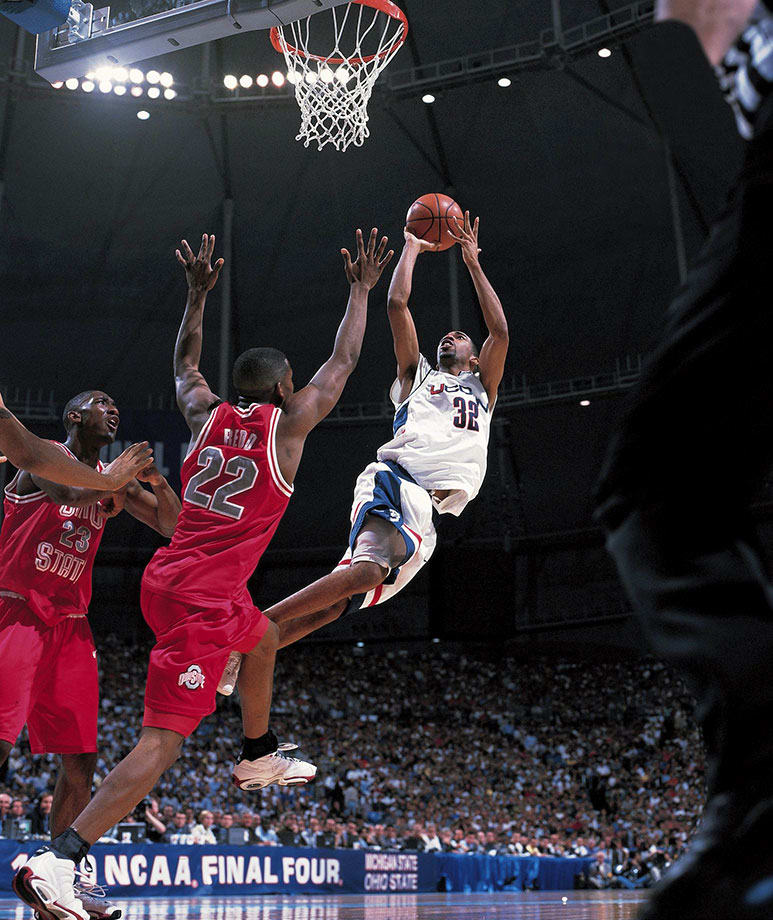
Trailing by one with a second remaining, Hamilton hit a fadeaway jumper to beat Washington in the 1998 NCAA tournament. Although the Huskies lost in the Elite Eight that year, the shot helped set the stage for Hamilton's dominance in the 1999 tournament, when he steered Connecticut to a national championship. Hamilton scored 27 points with seven rebounds in the final as Connecticut beat Duke 77-74. He was named the Most Outstanding Player of the tournament. The two-time Big East Player of the Year spent three years hitting big shots for the Huskies, averaging 21.5 points per game as a junior and senior.
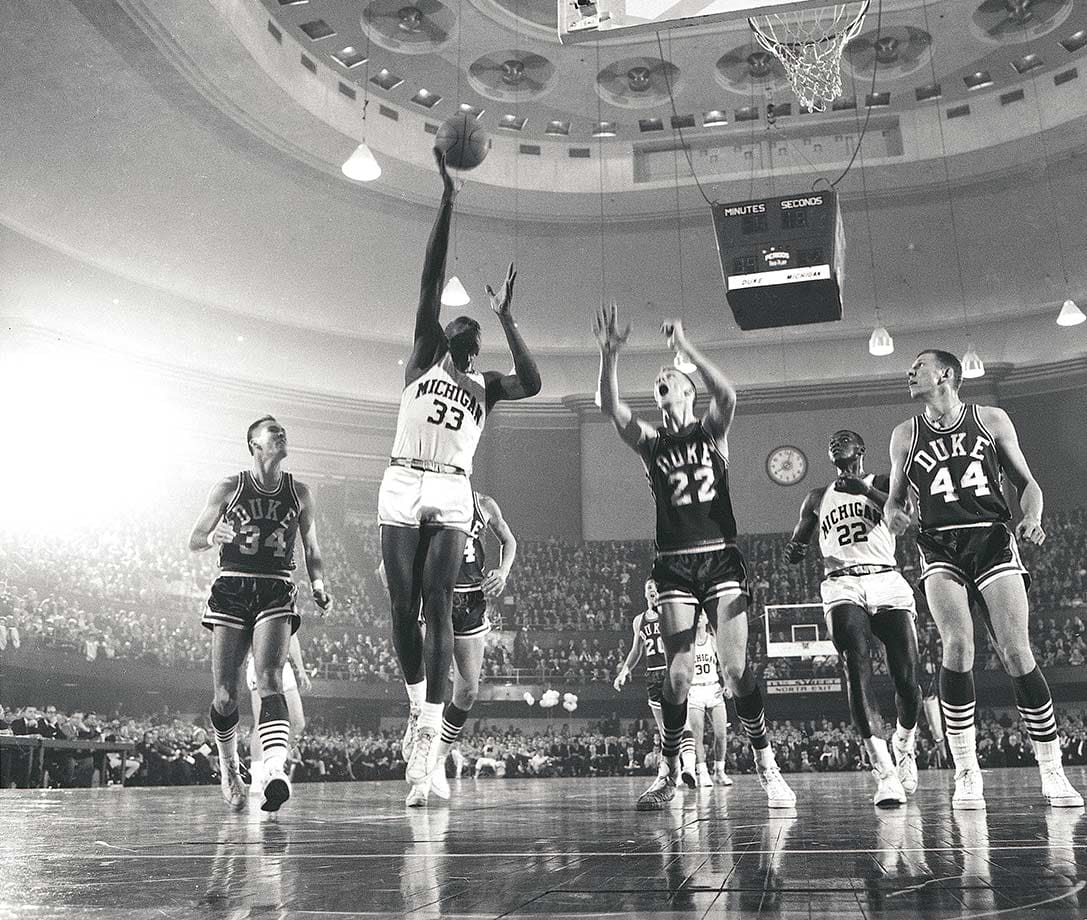
Michigan's Crisler Arena, which opened in 1967, is also known as "The House that Cazzie Built" despite the fact that Russell never played a game there. Russell scored 30 points and grabbed 14 rebounds in his first varsity game for the Wolverines, a feat that would become merely average by his senior year, in which he averaged 30.8 points. Michigan's all-time leader in scoring, Russell set a new record for points in a season each year, progressively breaking his own record by setting the bar a little bit higher. The Wolverines reached the 1964 Final Four his sophomore year and got a game further the next year before falling to UCLA. Although Michigan lost to Kentucky in the Elite Eight in Russell's final season, he won the Helms Foundation Player of the Year in addition to his second Big Ten MVP Award.
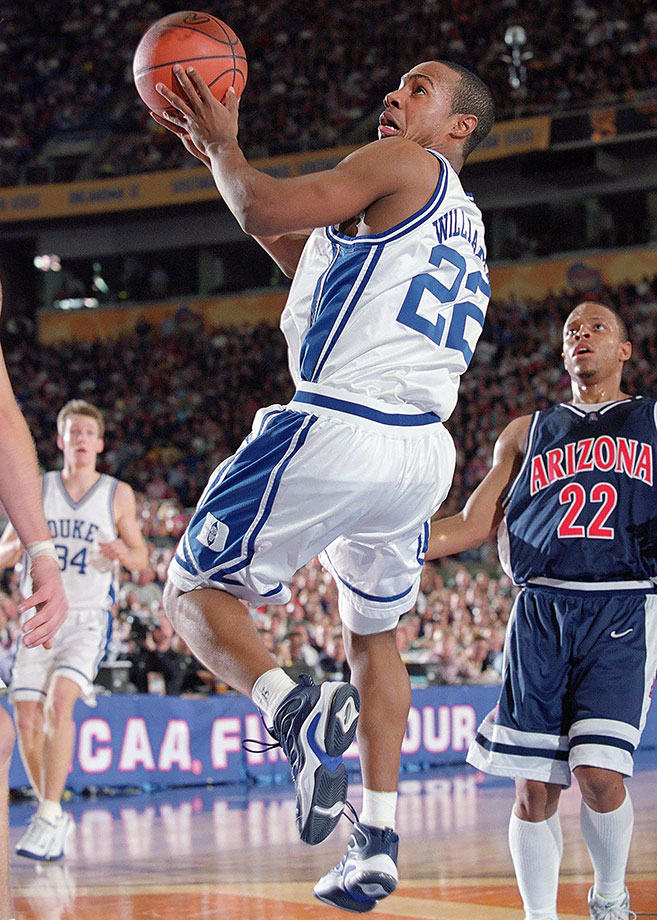
In the 2000-01 season Williams became the first Duke player to lead the ACC in scoring since Danny Ferry in 1989 as he led the Blue Devils to the national championship. The following year Williams won the Naismith and John Wooden award, and his .880 win percentage in games started is the second best in Duke's illustrious history among players with 100 or more career starts.
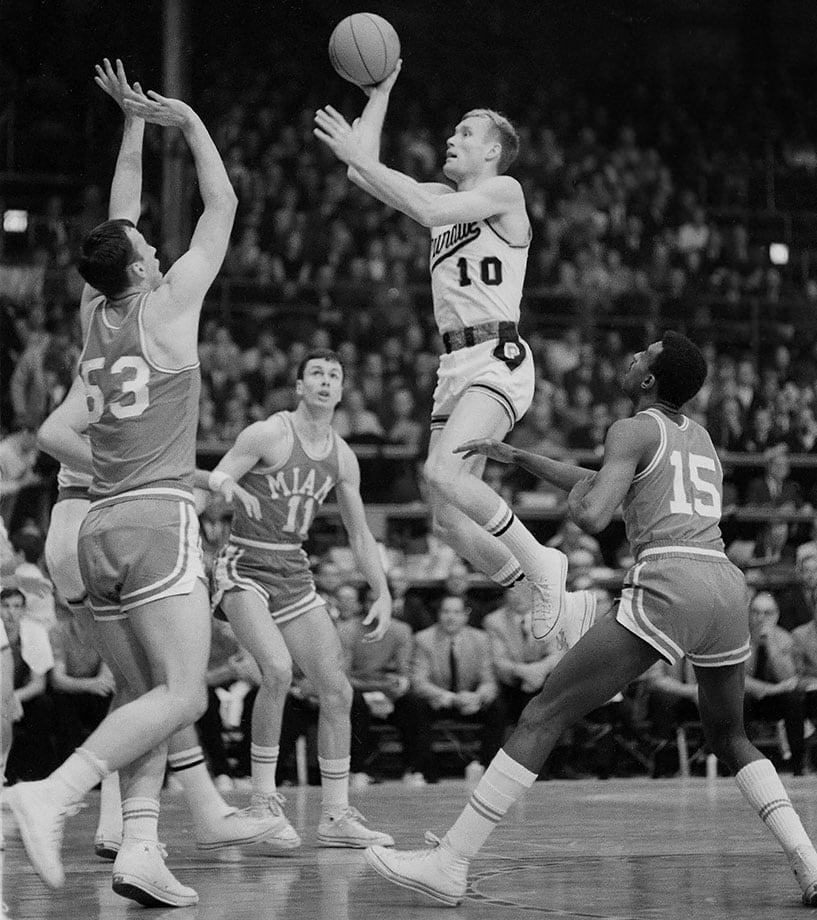
Mount learned to shoot by trying to loft a tennis ball into a peanut can. The unusual method worked as Mount became one of the most prodigious scorers in Big Ten history. Mount led Purdue to the 1969 national championship game, where the Boilermakers lost to Lew Alcindor's UCLA squad. Mount got Purdue to the title game, hitting a game-winner with two seconds left in overtime to defeat Marquette in the Elite Eight. The two-time Big Ten Player of the Year averaged between 28.5 and 35.4 points per game in his three varsity seasons, the latter a Big Ten record. He scored 61 points against Iowa his senior year but would have had 74 points had the three-point line existed. Still, he still holds the Big Ten record for points in a game.
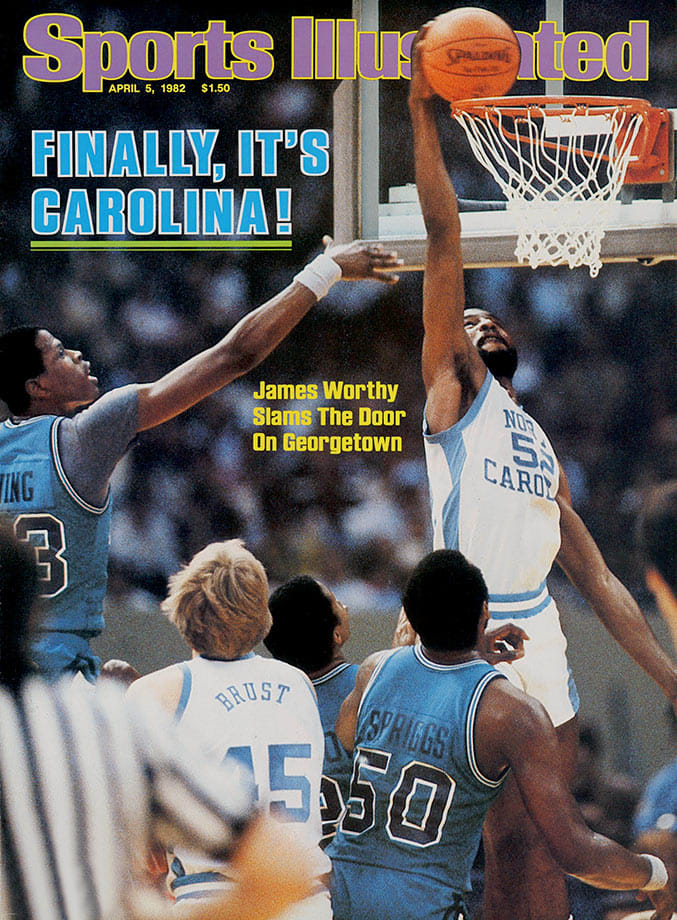
The only thing that could stop Worthy was a wet floor. As a promising freshman averaging 12.5 points and 7.4 rebounds, Worthy broke his ankle slipping on a wet spot at Carmichael Auditorium, limiting him to just 14 games. After missing most of his freshman season, Worthy had a stellar sophomore year, averaging 15.6 points per game, earning first-team All-America honors and scoring 28 points in a win over Georgetown in the 1982 championship game. Worthy was also on the receiving end of the most famous turnover in NCAA tournament history when Georgetown guard Fred Brown accidentally threw Worthy the ball in the final seconds.
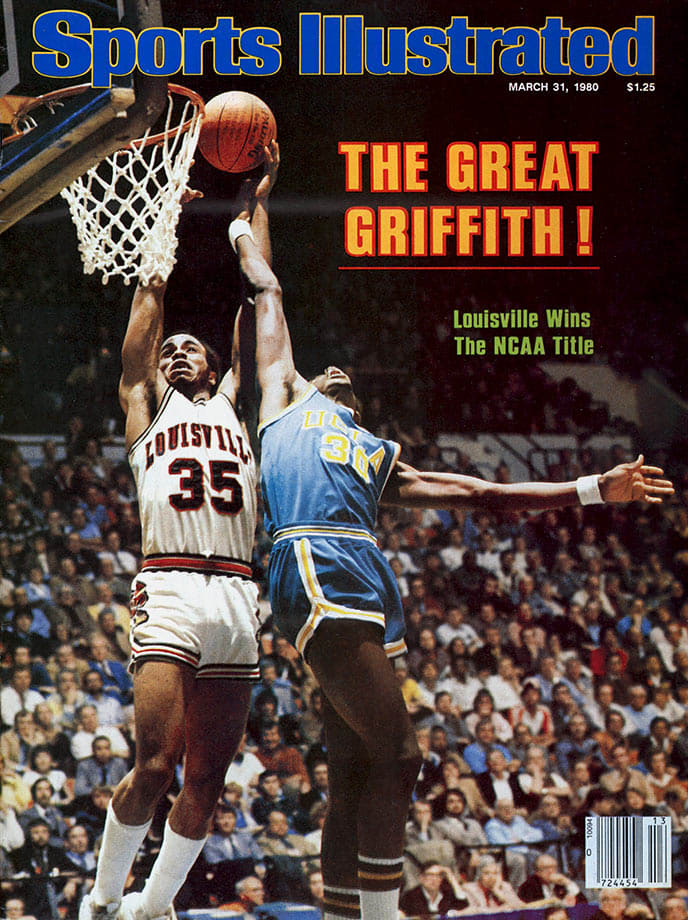
Griffith, the 1980 John Wooden Award winner, led the Cardinals to their first national championship that season, scoring a game-high 23 points in Louisville's 59-54 victory over UCLA in the final. Griffith averaged 23 points per game with five rebounds and 2.4 steals in 1979-80 and his 825 points were the highest single-season total in Louisville history. Nicknamed Dr. Dunkenstein for his prolific dunking ability, Griffith threw down an "Around the World" dunk in the Elite Eight in the 1980, and his 156 career dunks are second most all-time for the Cardinals.
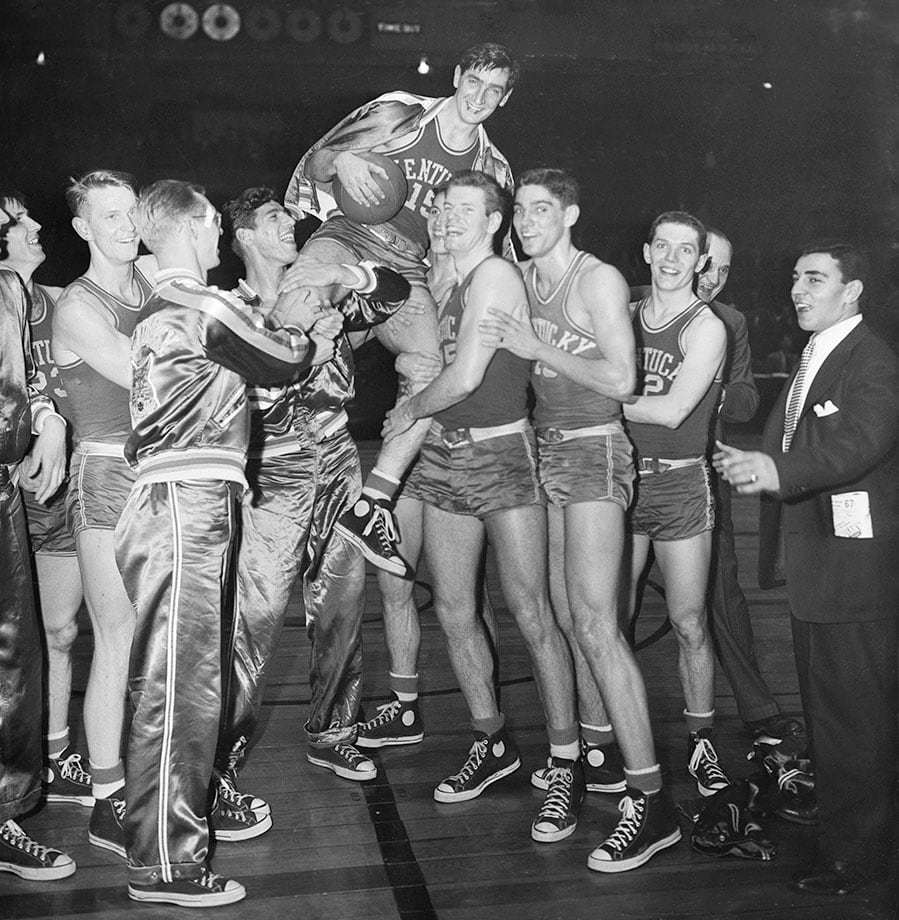
As a freshman, Groza was averaging 16.5 points when he was drafted by the Army 10 games into the season to serve in World War II. Groza returned two years later two inches taller and 70 pounds heavier. The added size made him more dangerous on the court and he helped form the "Fabulous Five" as Kentucky went on to win the 1948 national championship. Groza averaged 20.5 points per game the next season to lead the Wildcats to another national championship, becoming a member of the only Kentucky team to win back-to-back national championships. In the latter title game in 1949, Groza scored 25 points, more than half of Kentucky's points, in the 46-35 victory.
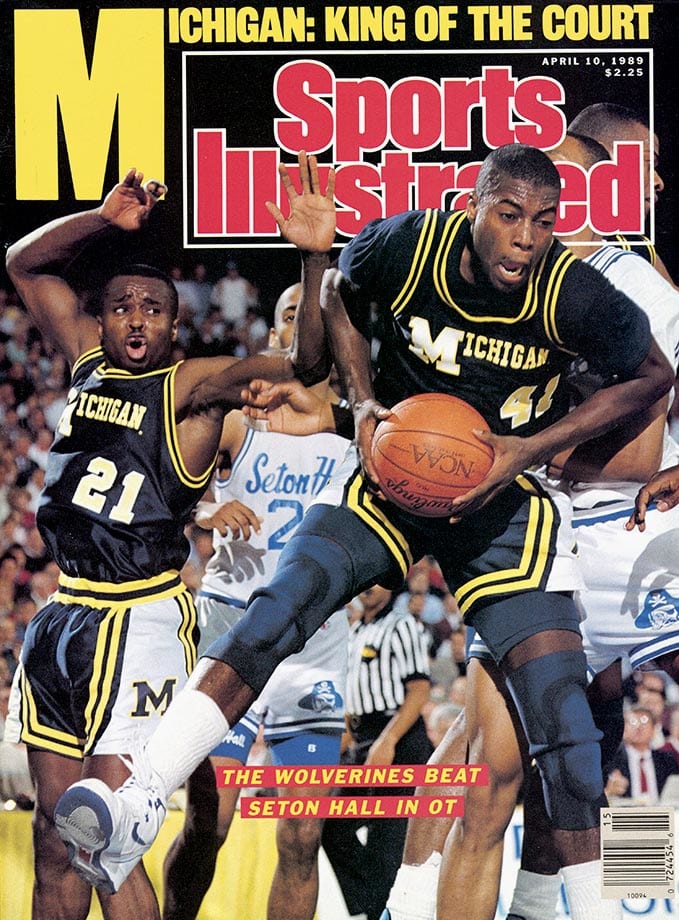
The sharp-shooting Rice got hot at just the right time in 1989, setting the record for points in an NCAA tournament with 184 as the Wolverines claimed the national championship. Rice was at his best in the final against Seton Hall when he had 31 points and 11 rebounds in Michigan's 80-79 overtime victory over Seton Hall. Rice averaged 25.6 points as a senior after scoring 22.1 points per game the year before, and his 2,442 points still rank No. 1 in Michigan history and No. 3 in Big Ten history. His 308 career points in the NCAA tournament ranks sixth all-time.
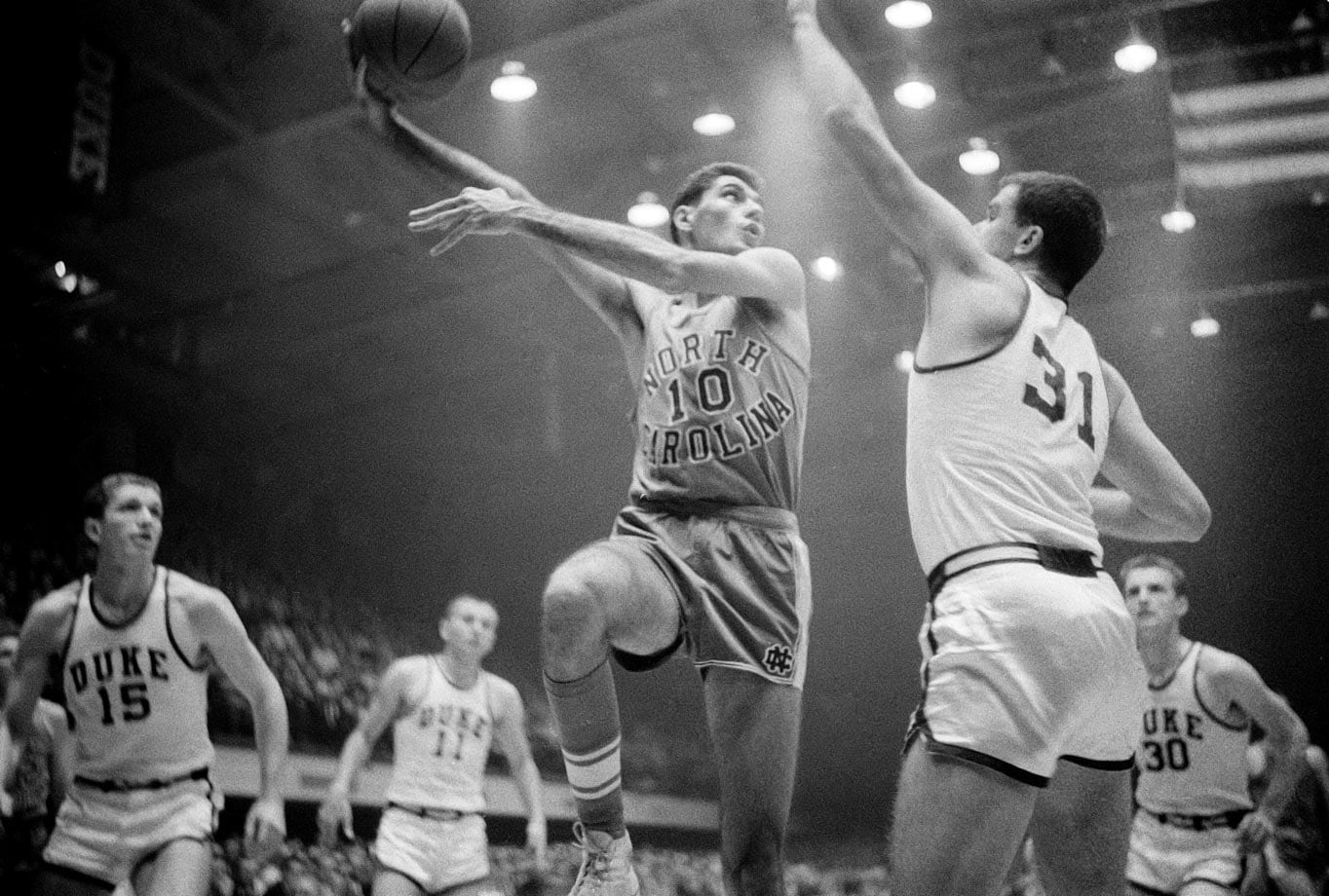
In 1957, Rosenbluth had one of the best seasons in history. He is one of just two players to win national Player of the Year, ACC Player of the Year, ACC tournament MVP and NCAA regional MVP in the same season. That year Rosenbluth averaged 28.0 points -- the highest season scoring average in North Carolina history -- and 8.75 rebounds, and the Tar Heels claimed a national championship in an epic battle with Kansas. In the championship game, Rosenbluth scored 20 points to lead the Jayhawks to a triple-overtime victory over Wilt Chamberlain-led Kansas.
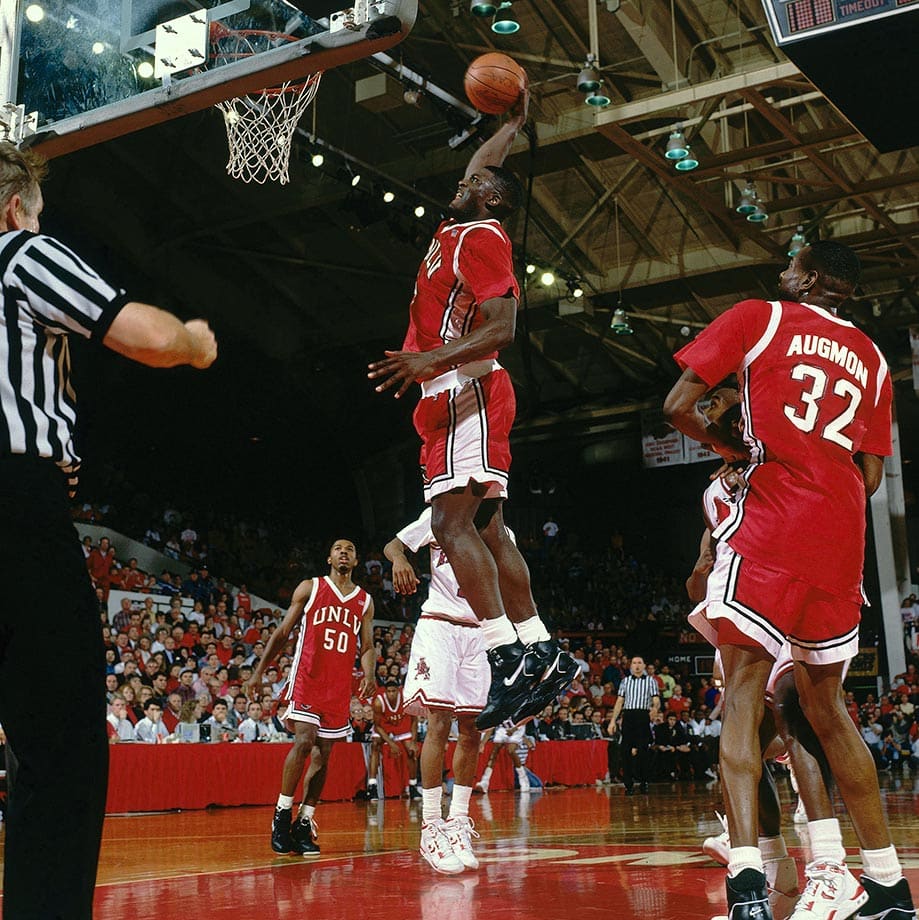
Johnson was either a conference or national player of the year every season of his college career. He progressed from back-to-back National Junior College Athletic Association Player of the Year honors — the only player to ever win the award for both years that he played — to Big West Conference Player of the Year to Naismith and Wooden Award winner. During his two years at UNLV, Johnson averaged more than 20 points and 10 rebounds. He also set a school record by making 66.2 percent of his shots his senior year. Johnson's time with the Runnin' Rebels marked the peak of the program as UNLV won a national championship in 1990 and followed that up with a Final Four appearance, losing to Duke after winning its first 34 games that season.
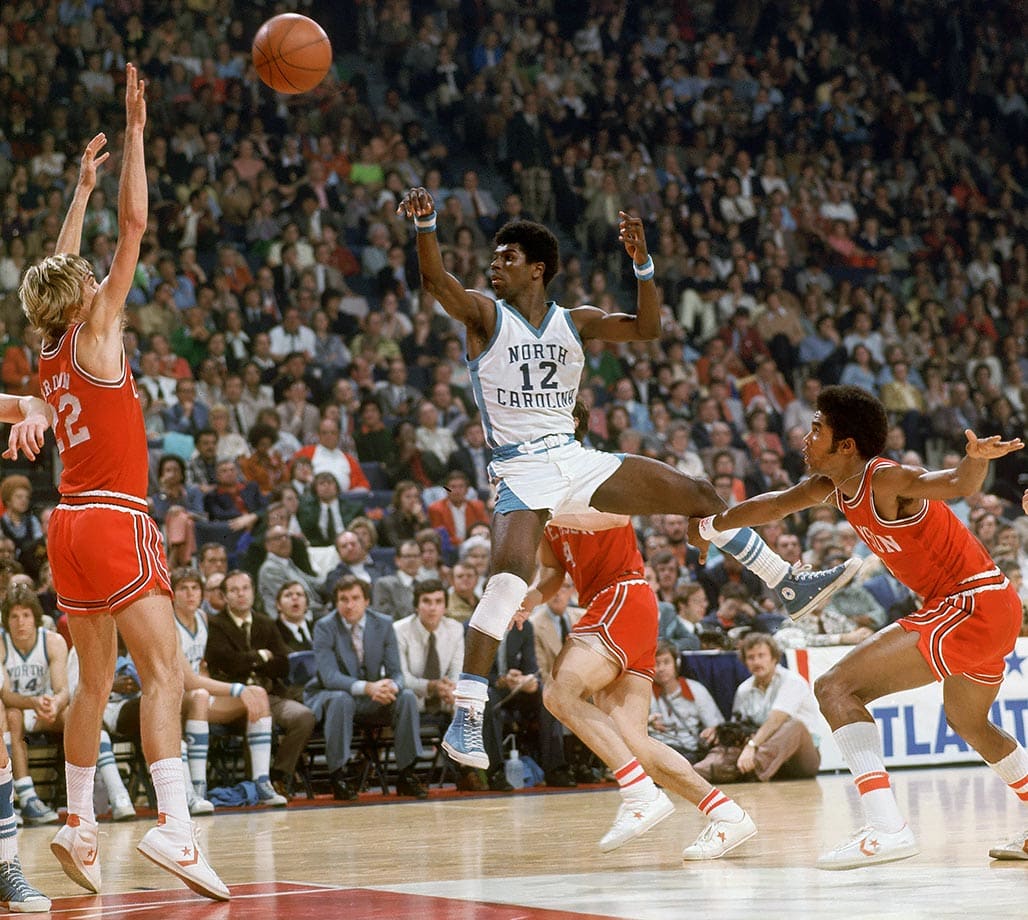
One of only three players in ACC history to score 2,000 points and dish out 600 assists, Ford was dangerous with the ball in his hands. He became the first freshman to win ACC Tournament MVP in 1975, and he helped the Tar Heels reach the NCAA championship game in 1977. Ford's school record for points -- 2,290 -- stood until Tyler Hansbrough finally broke it.
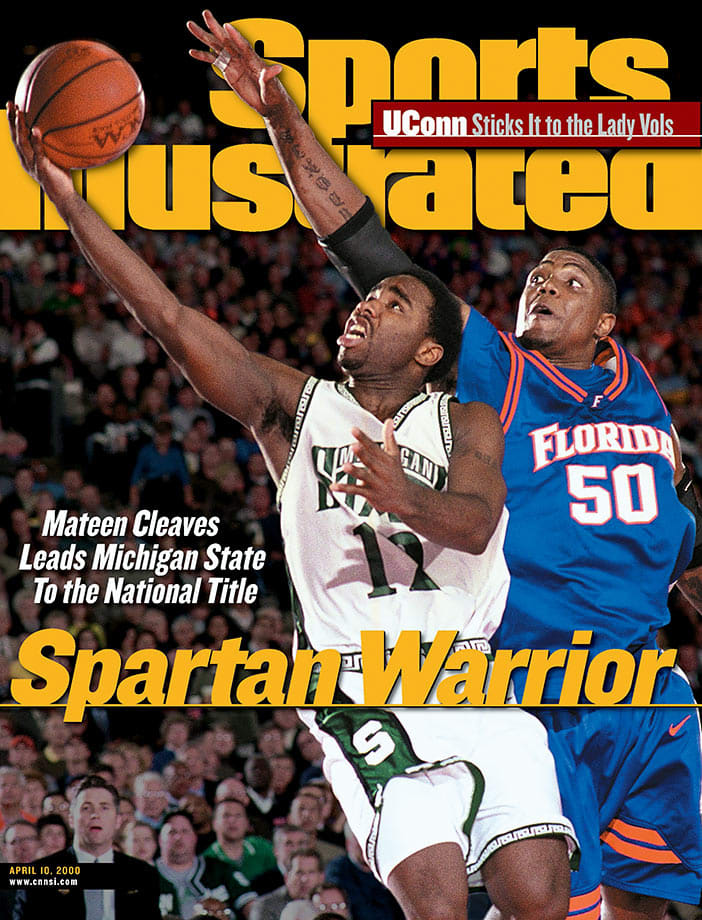
Cleaves was the Spartans' only three-time All-America and was named Big Ten Player of the Year twice. Cleaves holds the Big Ten record for career assists with 816 and set the single-season record as a junior with 274. But it was his leadership that mattered most as Michigan State won the 2000 NCAA championship. Cleaves' dramatics in the 2000 championship game against Florida were legendary. After taking a nasty foul from Gators guard Ted Dupay, Cleaves had to leave the game and it looked like he would not return after suffering a sprained ankle. However, he hobbled back onto the court in the second half, finished with 18 points and four assists in the win, and wept as he leaned on crutches and watched "One Shining Moment".
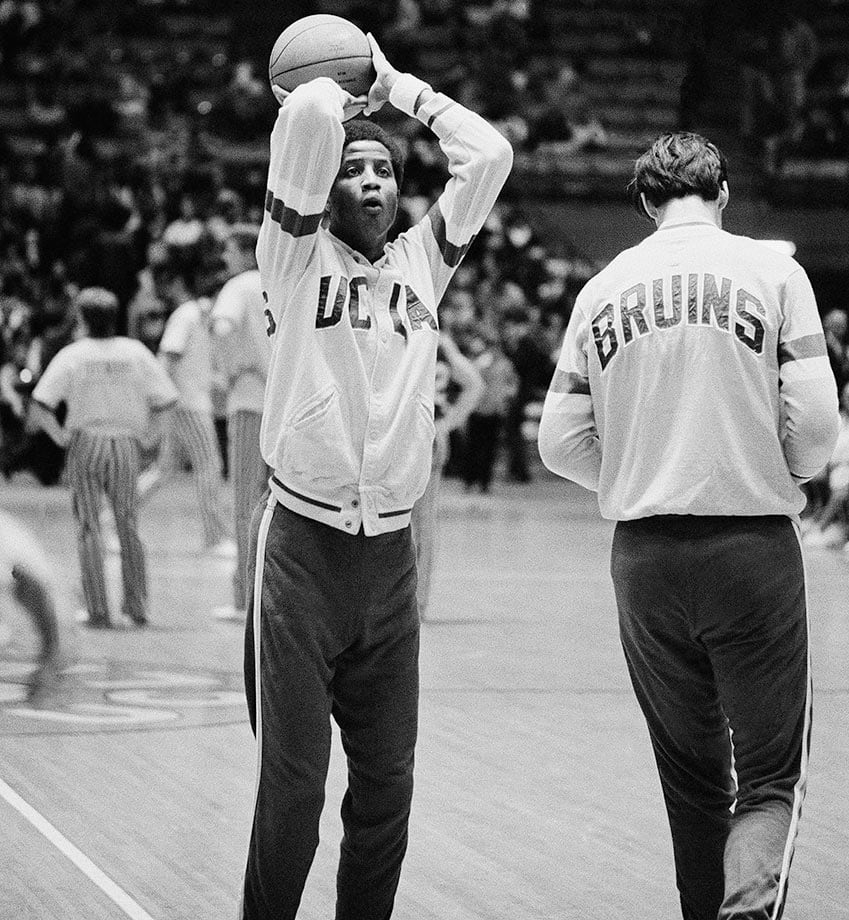
Wilkes was an important part of the Bill Walton-led teams that won the 1972 and '73 titles and reached the '74 Final Four. He was a two-time All-America who averaged 15 points, 7.4 rebounds and shot 51.4 percent during his three years. He was also a three-time academic All-America.
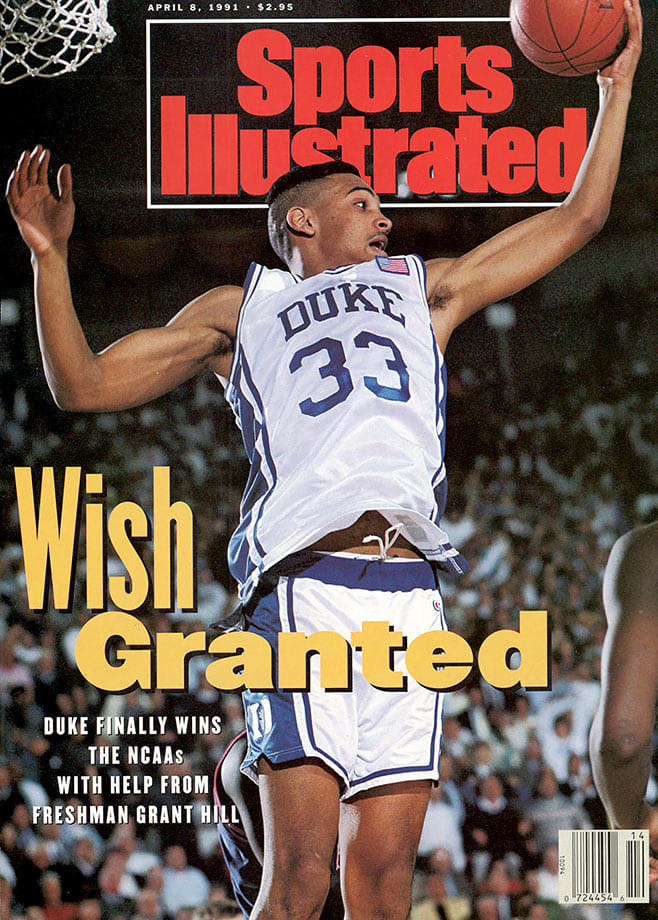
During his four years at Duke, Hill played in three NCAA championship games, winning twice. Hill became the first player in ACC history to record more than 1,900 points, 700 rebounds, 400 assists, 200 steals and 100 blocked shots in a career. The Blue Devils won championships during his freshman and sophomore years, becoming the first program to win consecutive titles since UCLA in 1973, and made it back to the final his senior year but lost to Arkansas. Hill capped off his career in Durham with an ACC Player of the Year selection in 1994. He also threw the most famous pass in NCAA tournament history, the three-quarters-length-of-the-floor bullet to Christian Laettner, whose turnaround jumper sank Kentucky in the epic 1992 East regional final.
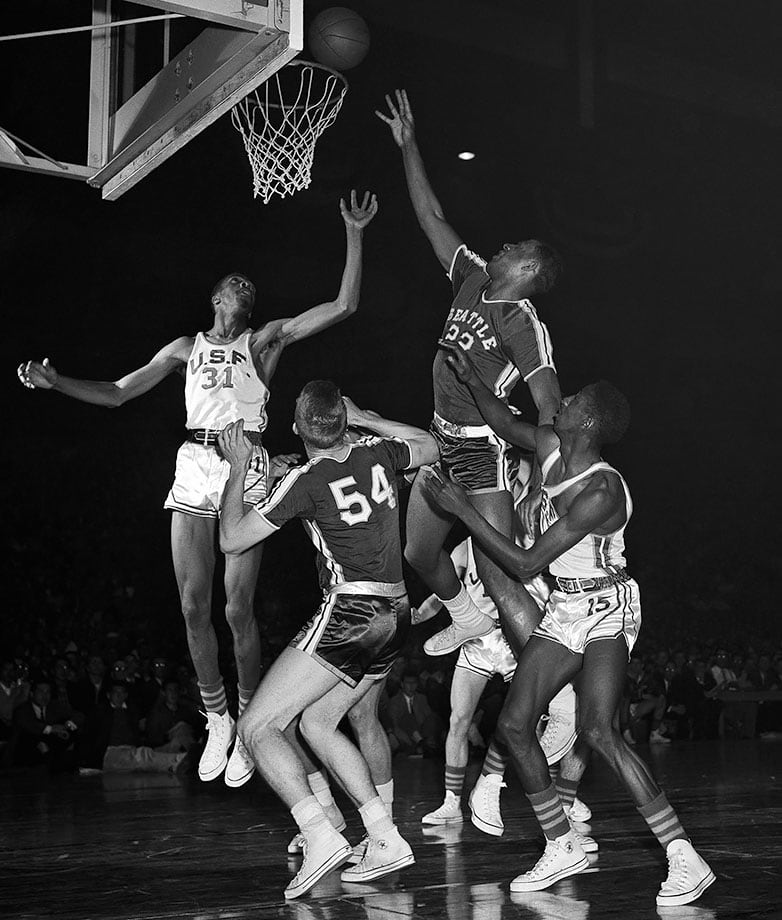
Bad grades in high school forced Baylor to spend a year at the College of Idaho and then another year playing for a Seattle AAU team before enrolling at Seattle University. Baylor made quite an impact in his two years at Seattle, leading the Chieftains to the championship game in 1958. Baylor recorded 25 points and 19 rebounds and was named the Most Outstanding Player of the Final Four despite Seattle's 84-72 loss to Kentucky. Baylor's career average of 31.3 points per game is the 12th highest all-time and his 19.5 rebounds per game rank 11th.
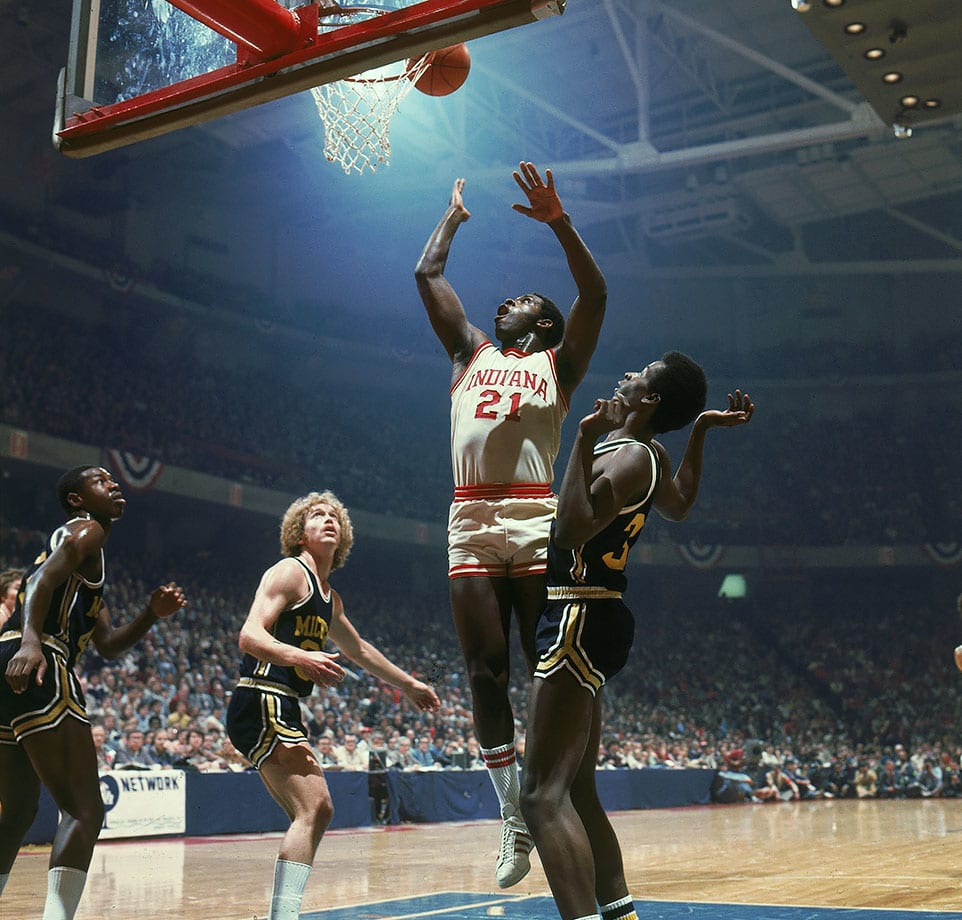
Buckner was such a physical guard that he was selected as a defensive back by the Washington Redskins in the 1976 NFL draft. He was the ultimate floor leader as Indiana beat Michigan to win the national title backed by Buckner's 16 points, eight rebounds, five steals and four assists in 39 minutes. His defense on Wolverines guard Rickey Green was a major factor in Indiana's ability to win.
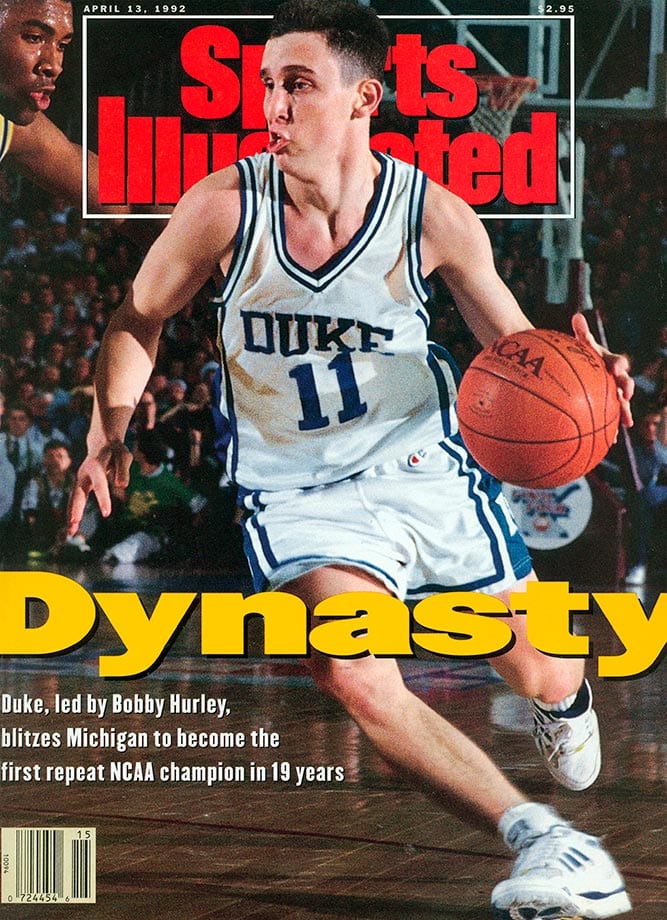
Hurley remains the NCAA's leader in career assists, but he also averaged double-figures in scoring in three of his four seasons, including 17 points per game as a senior. With Hurley dishing and scoring, the Blue Devils made three NCAA championship games and won twice. Hurley had nine assists in Duke's title game win over Kansas in 1991 and seven assists in a 71-51 victory over Michigan in the 1992 final, after which Hurley was named the Final Four's Most Outstanding Player.
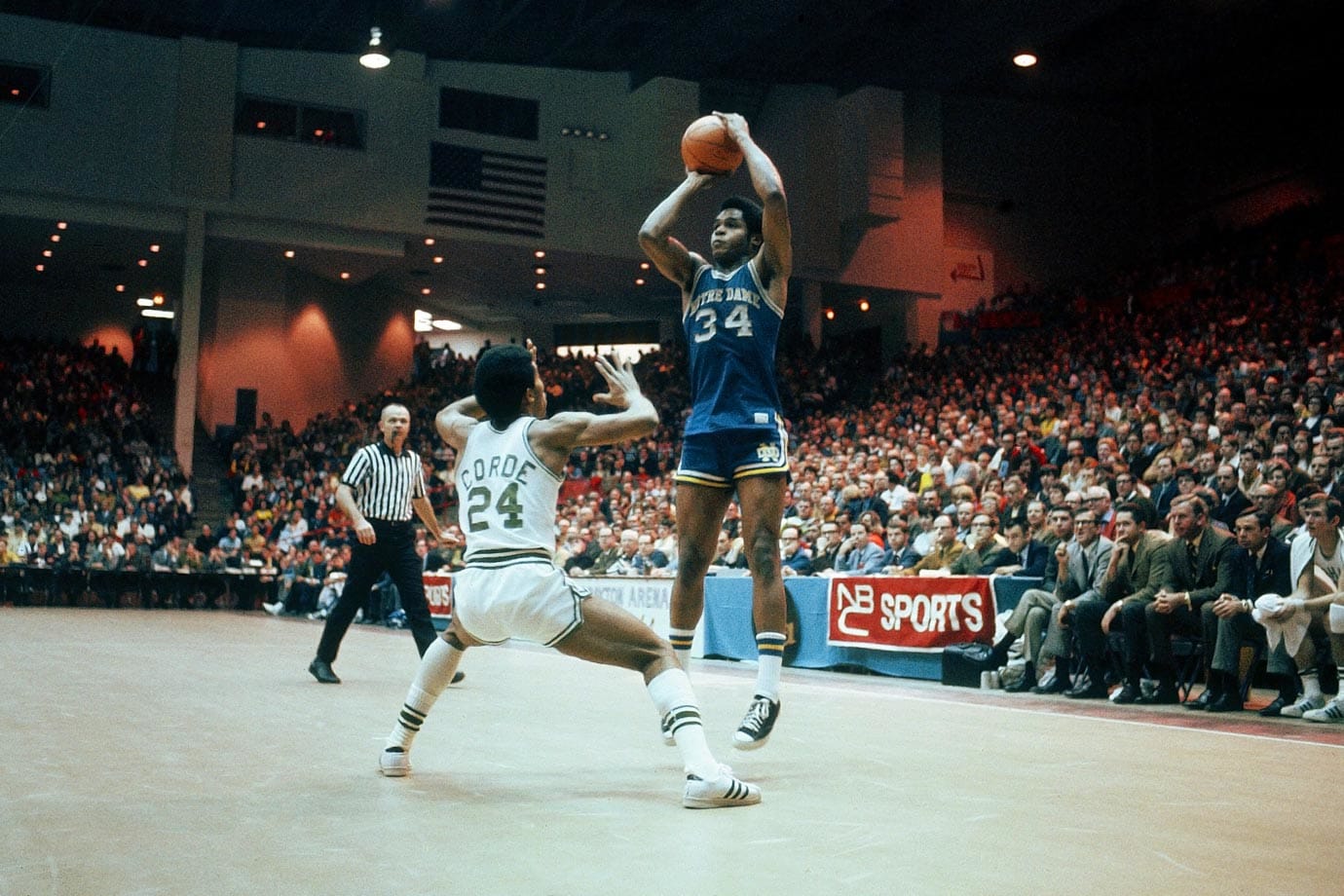
A pure scorer, Carr racked up the points — and scoring records — in bunches. Carr averaged 34.6 points per game in his career, the second highest scoring average in NCAA history, and scored 38 points per game in his final two seasons. The NCAA tournament brought out the best in Carr. He holds the records for most points in a tournament game with 61 against Ohio in 1970 and for highest scoring average in the NCAA tournament with 41.3 points per game. Despite Carr's scoring, the Fighting Irish never made it past the Sweet 16, even losing to Kentucky in 1970 when Carr scored 52 points on 22-of-35 shooting.
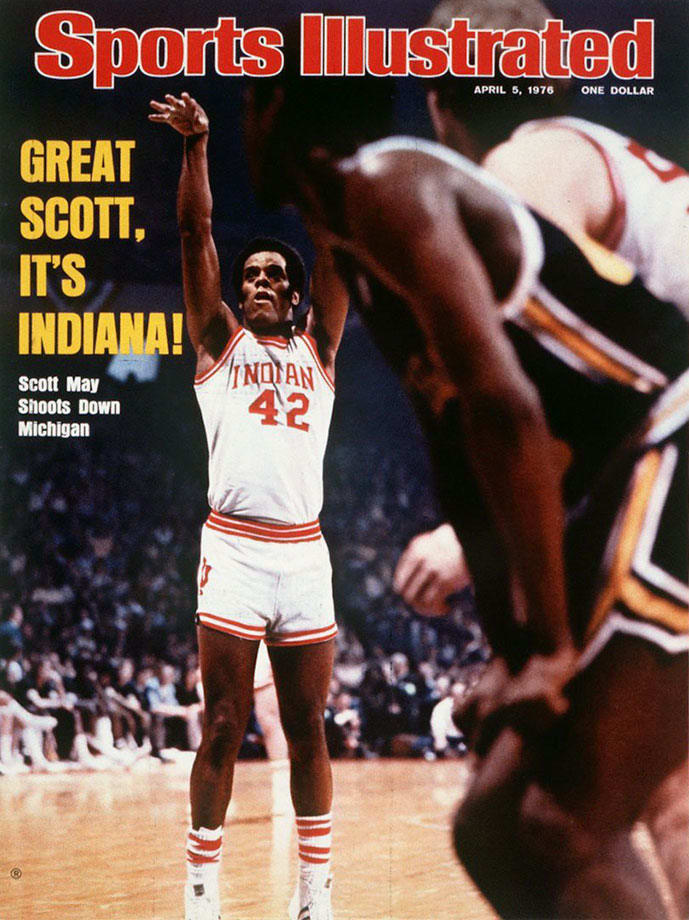
In some ways, May might be best remembered for having broken his arm toward the end of the 1975 season, which robbed Indiana of the chance to win a title. That's how valuable he was to the Hoosiers. May made up for that absence during his senior season, when he averaged 23.5 points per game and helped lead the Hoosiers to a perfect season. When his son, Sean, won a national title with UNC in 2005, they became the third father-son duo to both win NCAA men's basketball championships.
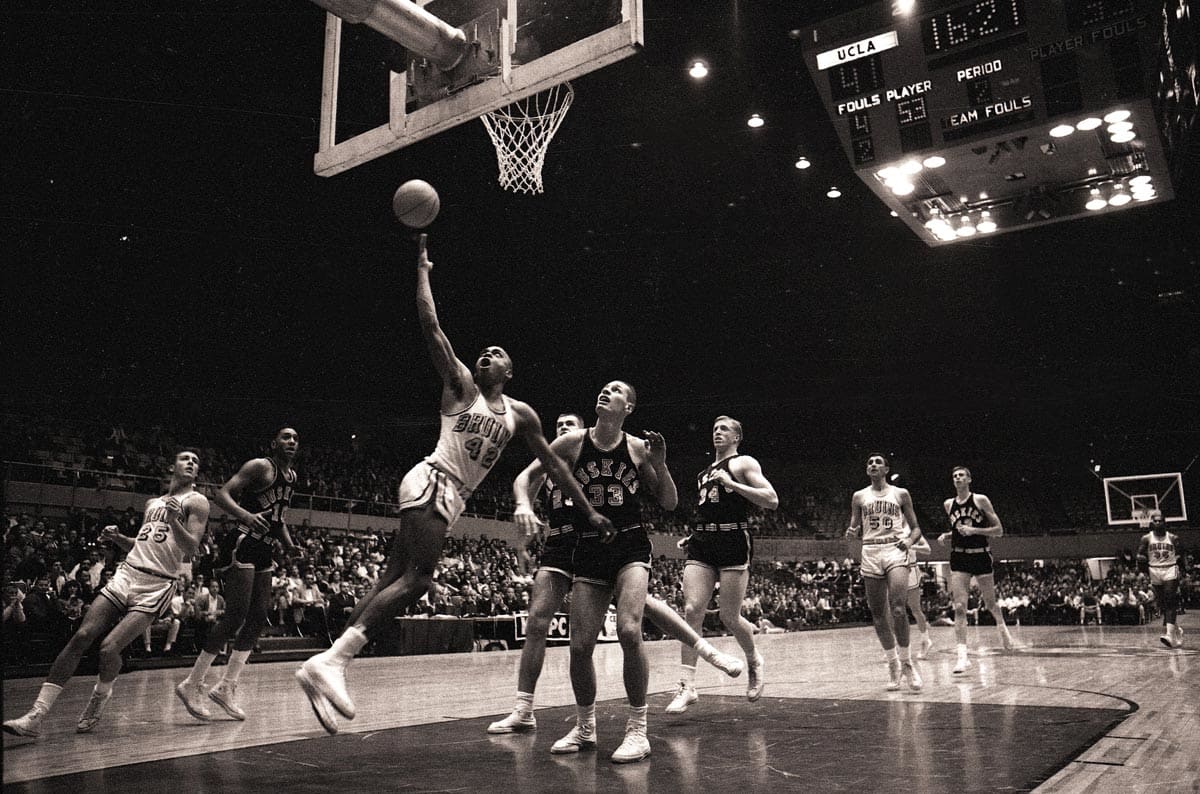
Coming out of the same high school as Wilt Chamberlain, Hazzard faced some high expectations. He managed to live up to them. After spending his freshman year at Santa Monica College, Hazzard transferred to UCLA, eventually winning the Helms Foundation College Player of the Year as he helped UCLA capture the 1964 national championship. An excellent ball-handler, Hazzard ran John Wooden's offense, dishing out eight assists in the Bruins' 98-83 victory over Duke in the championship game. In Hazzard's other two years in Westwood, UCLA reached the Final Four and the Sweet 16.
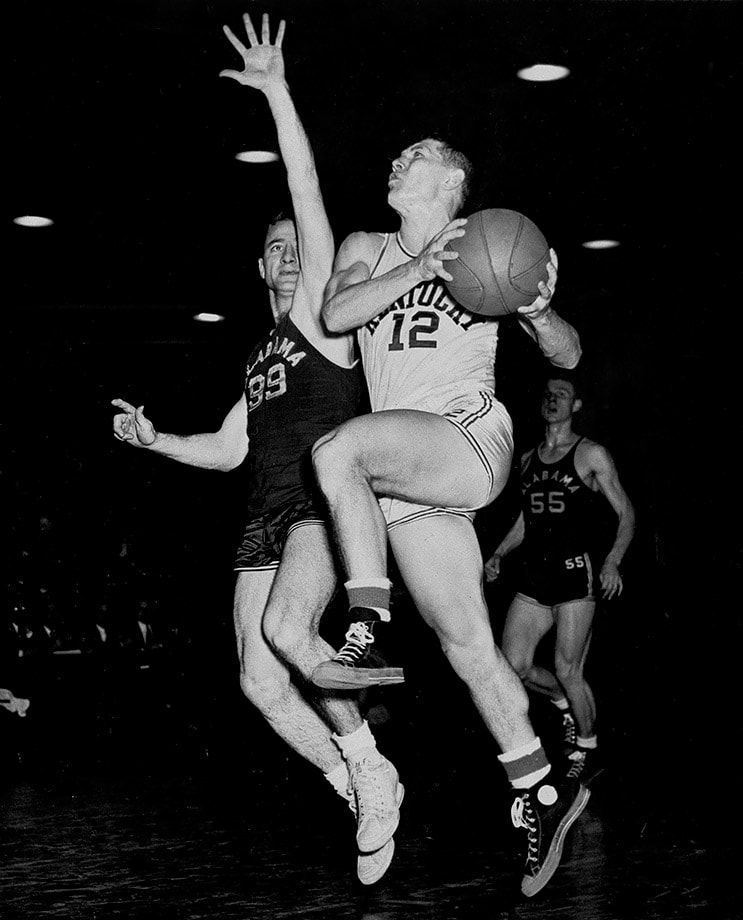
Tainted forever by his involvement in a point-shaving scandal, Beard was also a crucial member of Kentucky's "Fabulous Five" -- the nickname for the five starters of the 1947-48 teams. Beard led Kentucky in scoring as a junior as he won the first of his two national titles. During that stretch, the Wildcats lost just five games.
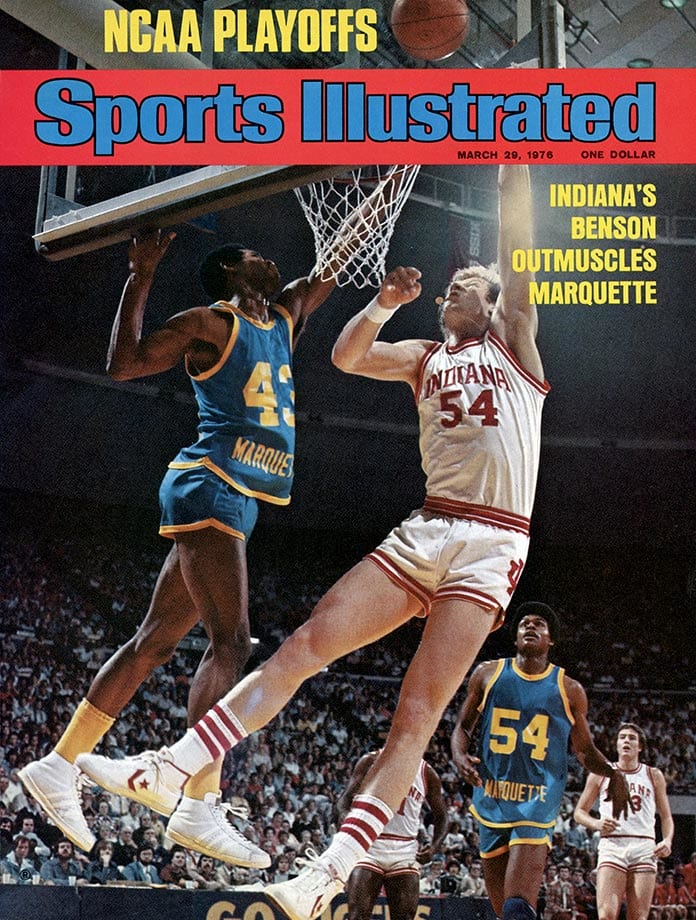
A future No. 1 overall draft pick, Benson was a starter on the last undefeated national champion, the 1976 Hoosiers. He was named the Final Four's Most Outstanding Player after scoring 25 points and grabbing nine rebounds in the championship game win over Michigan. Benson also had 33 points and 23 rebounds in Indiana's loss to Kentucky in the 1975 Elite Eight. Had Scott May not broken his arm late in the season, the Hoosiers would probably have won back-to-back titles.
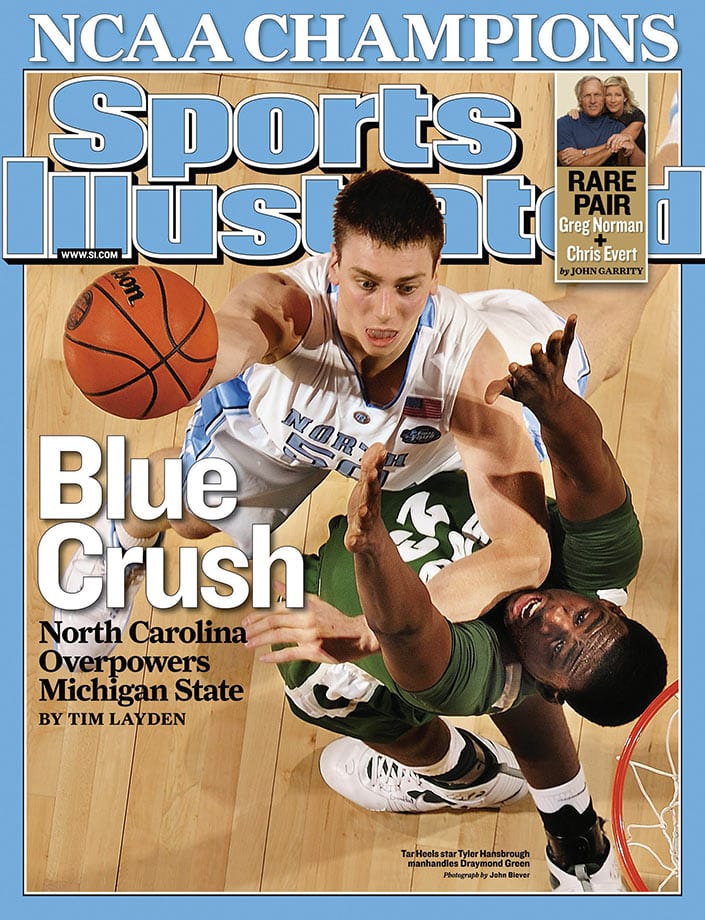
Hansbrough, who played so hard he earned the nickname "Psycho T," was the first player to be named first-team All-ACC four straight years. He remains the all-time leading scorer in the ACC, all-time leading rebounder at North Carolina, and the first player in ACC history to lead his team in scoring and rebounding for four straight seasons. Hansbrough twice turned down a chance to be an NBA first-round draft pick to return to Chapel Hill, and his loyalty paid off when he led the Tar Heels to the 2009 national championship after reaching the Final Four the year before. He averaged 18.5 points and 8.5 rebounds in the NCAA tournament during his career, and he had 18 points and seven rebounds in the national championship game as North Carolina defeated Michigan State, 89-72.
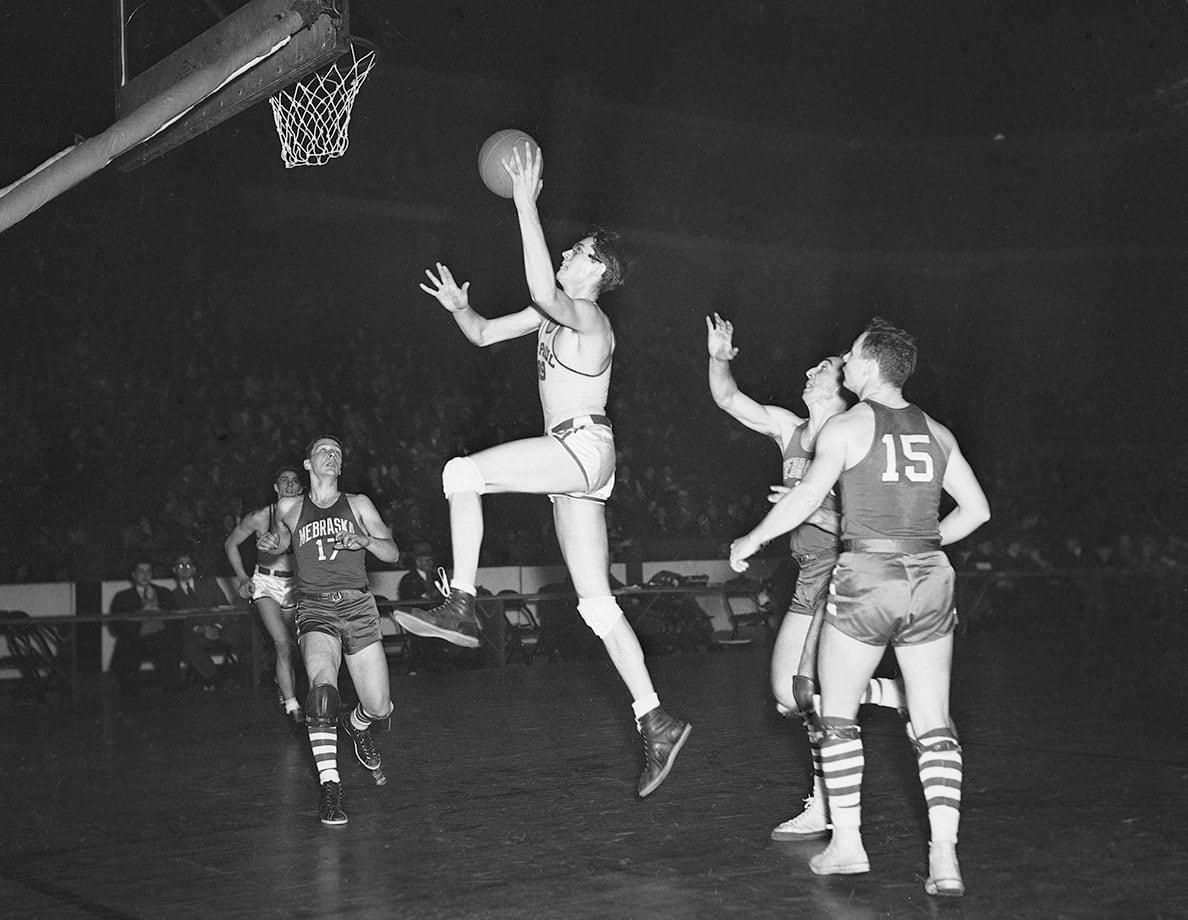
He is the only player on this list with a drill named after him. The Mikan Drill, in which a player stands under the basket and alternates making layups on each side of the basket (right hand on the right side, left hand on the left), was later a favorite of Shaquille O'Neal, helped Mikan develop his rebounding and enabled him to develop a knockdown hook shot that he could hit with either hand. Originally considered too uncoordinated to play, Mikan grew as a player under DePaul coach Ray Meyer, who had him punch a speed bag, take dance lessons and jump rope to improve his coordination. The unorthodox approach worked, and Mikan developed into a two-time player of the year and three-time All-America.
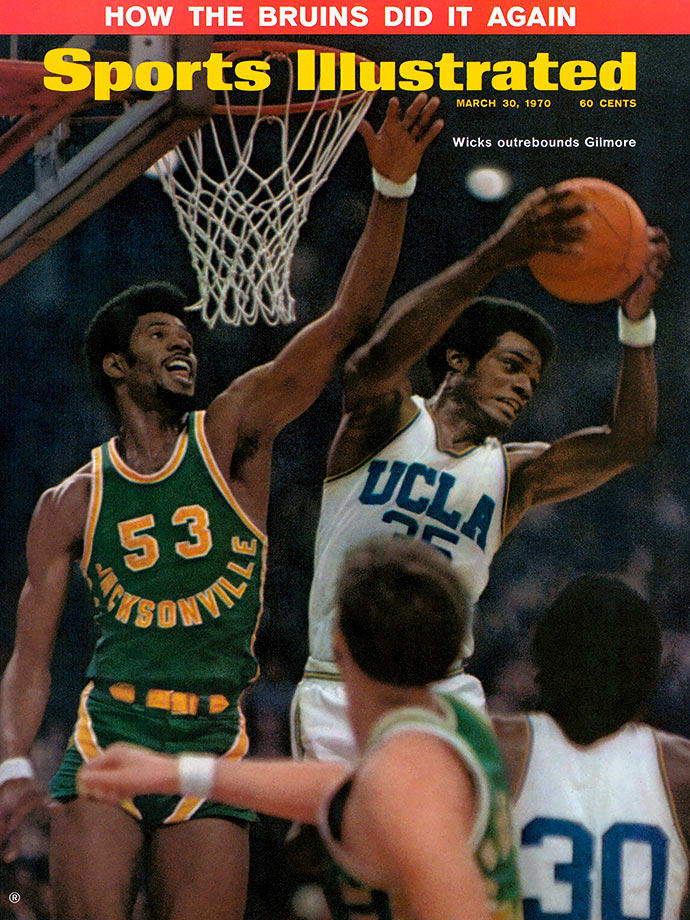
Unable to attend UCLA as a freshman because he didn't academically qualify, Wicks made up for lost time the following year, winning three national championships. Wicks led UCLA in scoring in his final two years and he led the Pac-8 in rebounding as a junior with 11.9 per game. During his three years, UCLA lost just four games. Wicks scored 17 points with a game-high 18 rebounds in the Bruins' 80-69 win over Jacksonville for the 1970 national championship, and he also played stellar defense on Jacksonville center Artis Gilmore, who had a five-inch height advantage. Wicks became an Academic All-America in 1971 in addition to a first-team All-America.
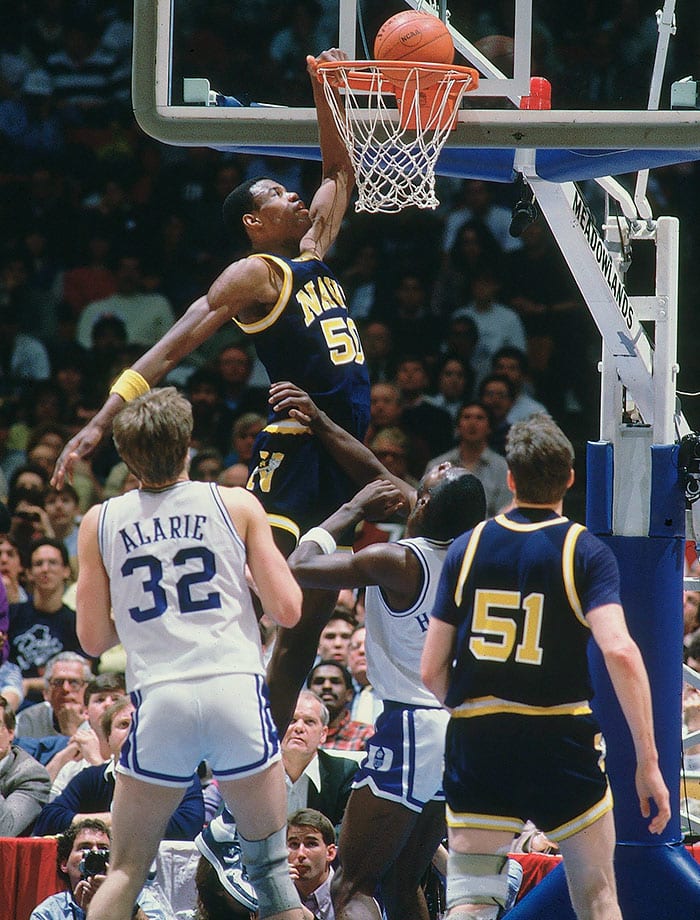
Robinson was a late bloomer, both in height and basketball. As a senior in high school he was 6-7, but after he went to the U.S. Naval Academy, he grew to over seven feet. "The Admiral" set the NCAA record for blocks in a season (207) as a junior. The Midshipmen reached the Elite Eight in 1986 with Robinson averaging 27.5 points and 11.8 rebounds, and he had 23 points and 10 rebounds in the Elite Eight loss to Duke. The following year, Robinson scored 50 points in a first-round loss to Michigan.
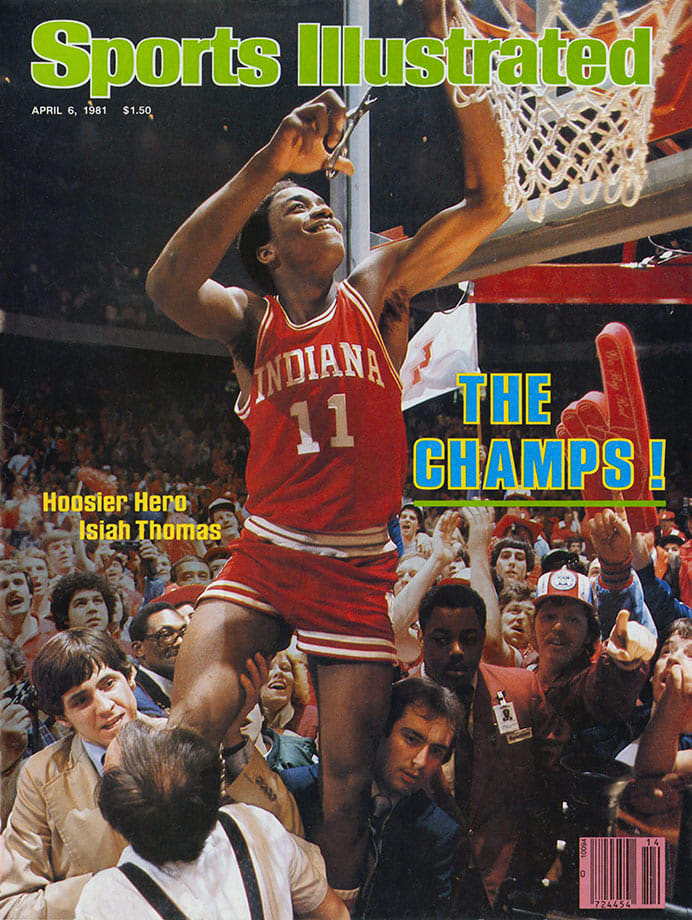
The Windy City native became the toast of Bloomington as he led Indiana to the 1981 championship as a sophomore. Hoosiers coach Bob Knight made Thomas a captain, and Thomas lived up to that billing by setting school records with 5.8 assists per game and 74 steals. He scored 23 points, 19 in the second half, during a 63-50 victory over North Carolina in the championship game. In an era in which very few underclassmen tried to turn pro, Thomas left school that spring and was selected by the Detroit Pistons with the No. 2 pick.
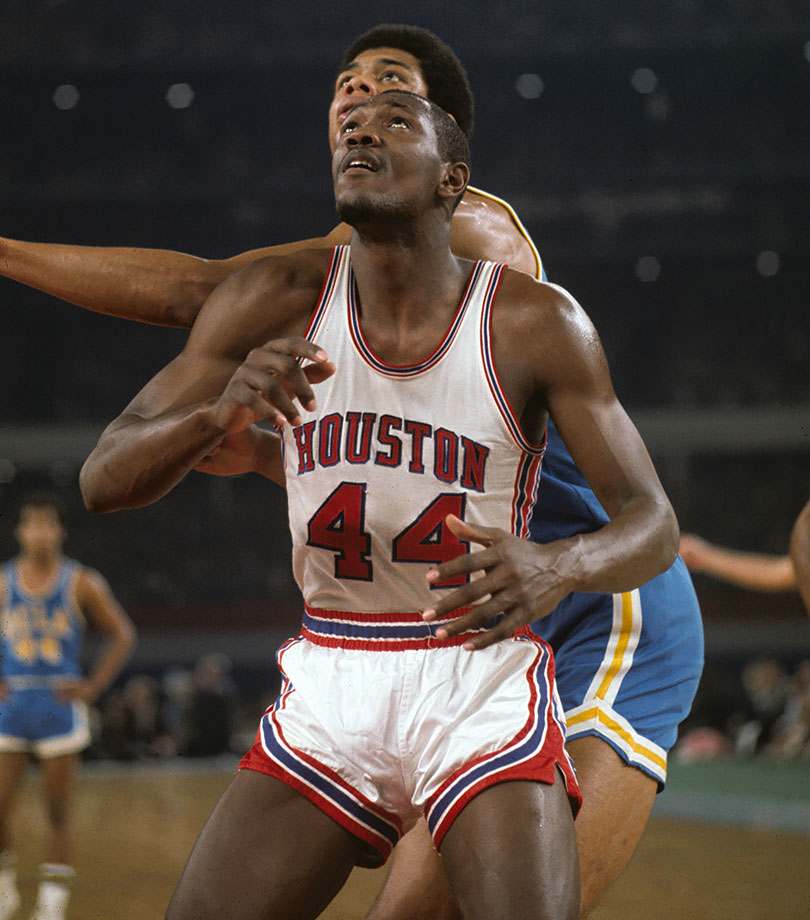
Hayes teamed up with Don Chaney to become the first black basketball players at Houston and reached back-to-back Final Fours in 1967 and 1968. Hayes even got the best of Lew Alcindor in the so-called Game of the Century in 1968, beating UCLA 71-69 in the Astrodome while scoring 39 points with 15 rebounds and limiting Alcindor to 15 points. But Alcindor got him back by beating him in the Final Four. With 2,884 points and 1,602 rebounds in his career, Hayes has the fifth-most points among players with at least 1,000 boards.
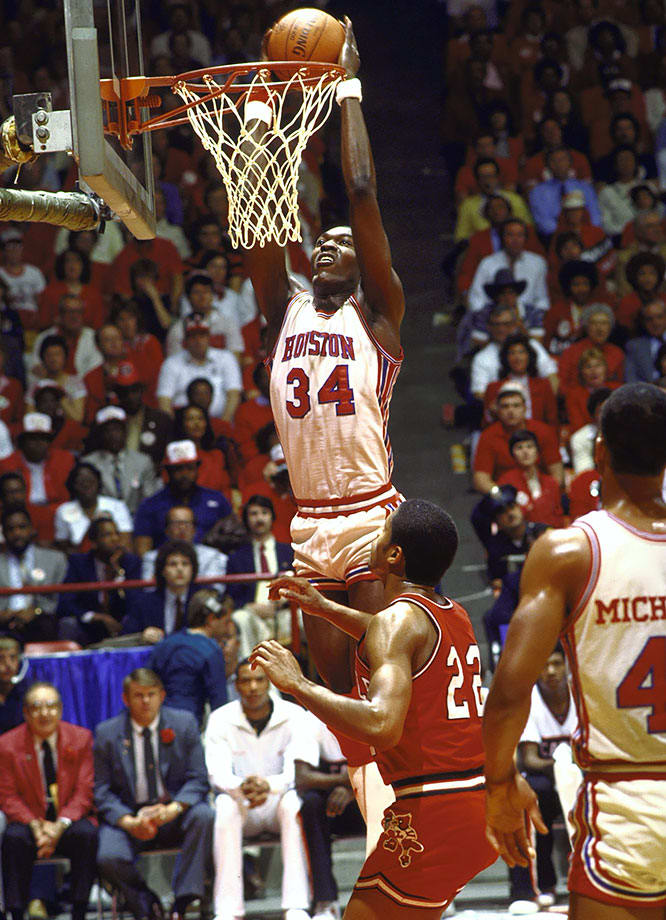
The Cougars earned the immortal nickname "Phi Slamma Jamma" for their acrobatics, but Olajuwon's presence in the post is what propelled them to three Final Fours. He averaged a double-double during his sophomore and junior seasons, leading the nation in rebounding as a junior with 13.5 per game. Houston lost in the national championship game during his final two years. In those two seasons Olajuwon averaged 19.1 points and 12.2 rebounds in the NCAA tournament.
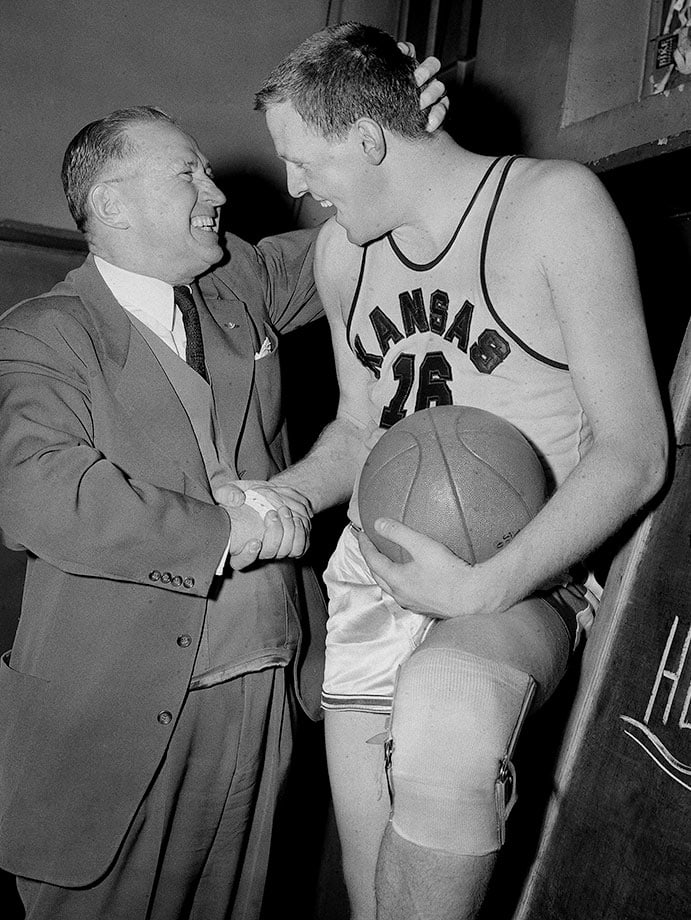
Until someone equals him, Lovellette will forever be an answer to a trivia question: Who is the only player to lead the nation in scoring and win an NCAA championship in the same year? Lovellette earned that distinction by averaging 28.6 points and scoring 33 points (to go along with 17 rebounds) in the Jayhawks' 1952 title game victory. Lovellette also set a record with 141 points in the NCAA tournament. Nicknamed Cumulus Clyde because of his height, Lovellette went on to win gold at the 1952 Helsinki Olympics.
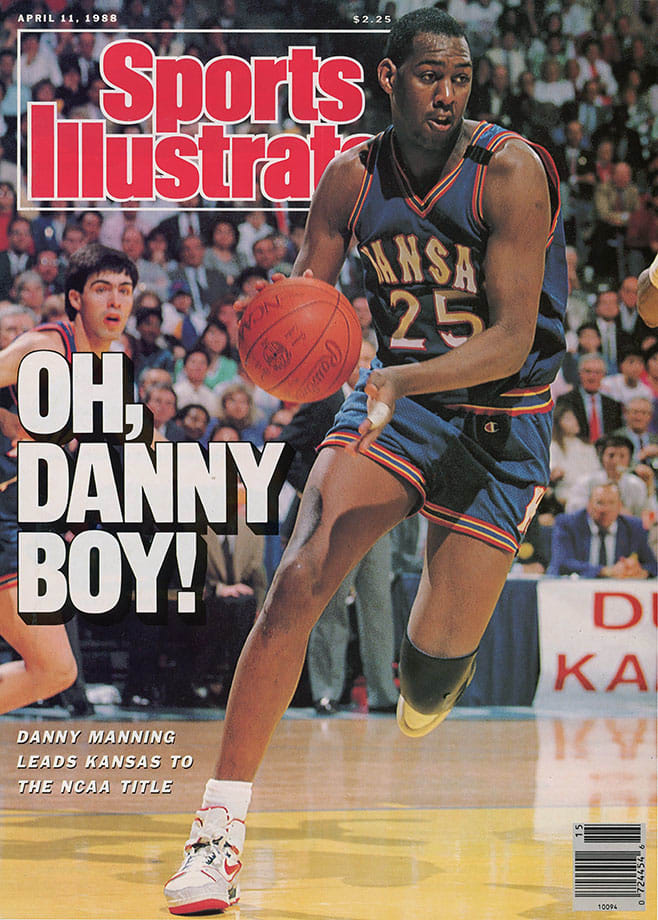
Danny and the Miracles stunned the nation in 1988 when they won the national championship after losing 11 games in the regular season, the most for an eventual champion. Manning left Kansas as the school's all-time leader in scoring and rebounding, and his 2,951 career points topped the Big Eight record books as well. In the final against Oklahoma, Manning had 31 points, 18 rebounds and five steals. The three-time Big Eight Conference Player of the Year also led Kansas to the Final Four in 1986 and the Elite Eight in 1987.
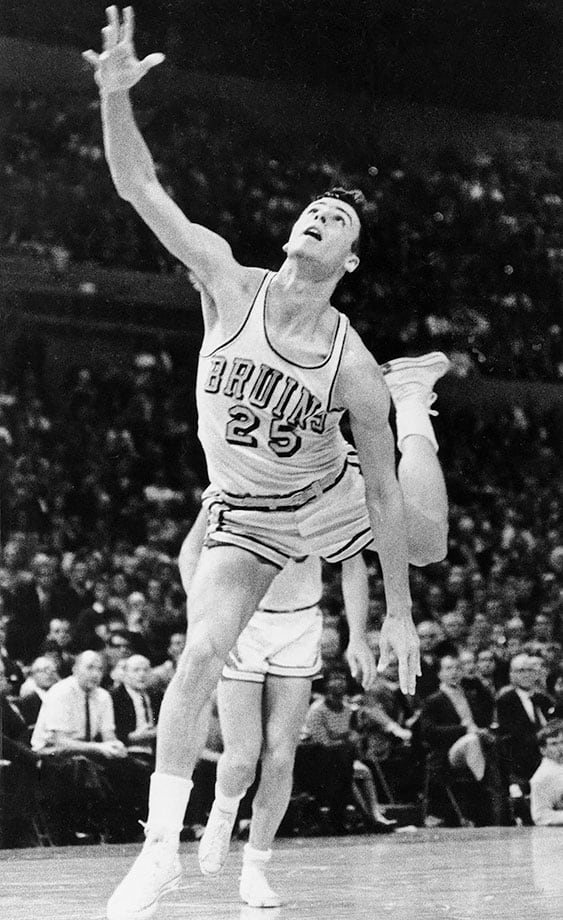
Goodrich was undersized and overlooked as a high school player in southern California, but his speed and deadeye shooting made him ideally suited for John Wooden's up-tempo system. In 1964, Goodrich teamed with Walt Hazzard to form arguably the best backcourt in NCAA tournament history. The Bruins went undefeated to deliver Wooden his first title. The following year, with Hazzard gone, Goodrich took over both playmaking and scoring duties and led the Bruins to another title. Goodrich averaged 21.5 and 24.8 points per game during his junior and senior seasons.
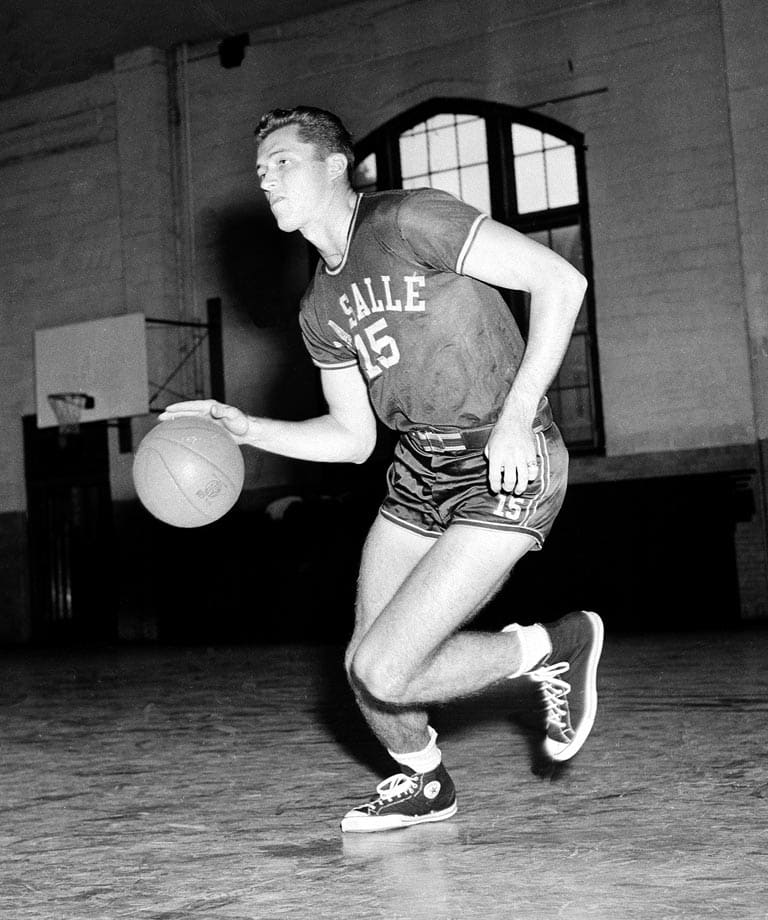
A Philly boy whose decision to stay home paid off, Gola led the Explorers to two NCAA finals and the 1954 championship. The Helms Foundation Player of the Year in 1954, Gola holds the record for most career rebounds in NCAA history (2,201), and he is one of just two players to score more than 2,000 points and grab 2,000 boards. He scored 19 points in the 1954 championship game to help La Salle beat Bradley 92-76 and brought the Explorers back to the brink of a title in the 1955 tournament before falling to San Francisco. After La Salle beat Bradley to win the title, Yogi Berra called him "the Joe DiMaggio of basketball" because of his composure.
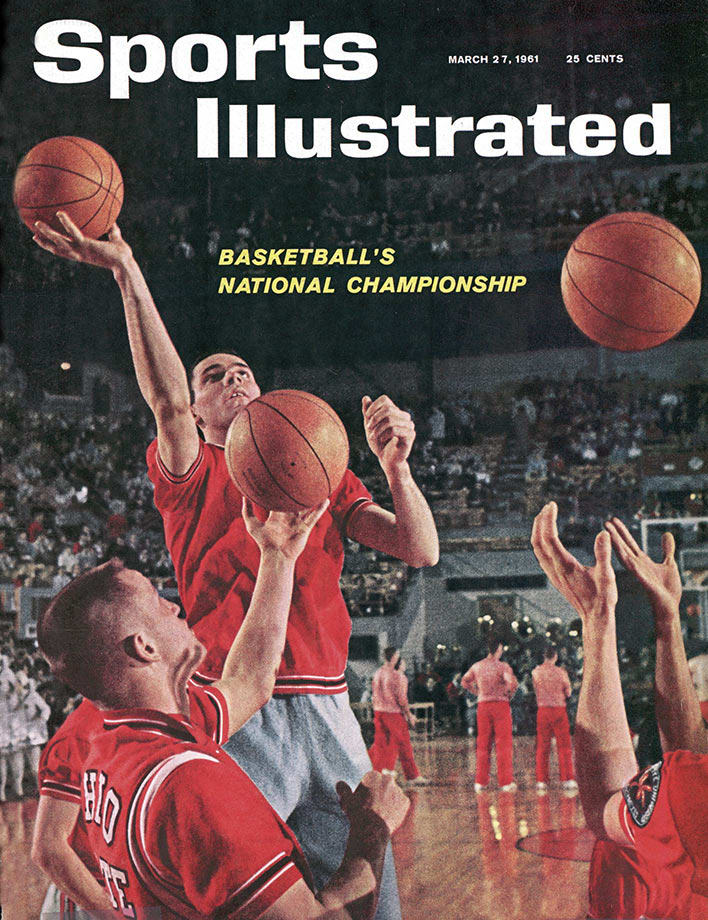
Lucas helped sway Mel Nowell, Bob Knight and John Havlicek to choose Ohio State with his commitment to the Buckeyes. Although he insisted on an academic scholarship to keep his options open, basketball provided all the opportunities Lucas would need as he propelled Ohio State to three championship appearances and one title. Lucas recorded the only 30-30 game in NCAA tournament history when scored 33 points and grabbed 30 rebounds against Kentucky in the Elite Eight in 1961. He was twice named the Most Outstanding Player at the Final Four.
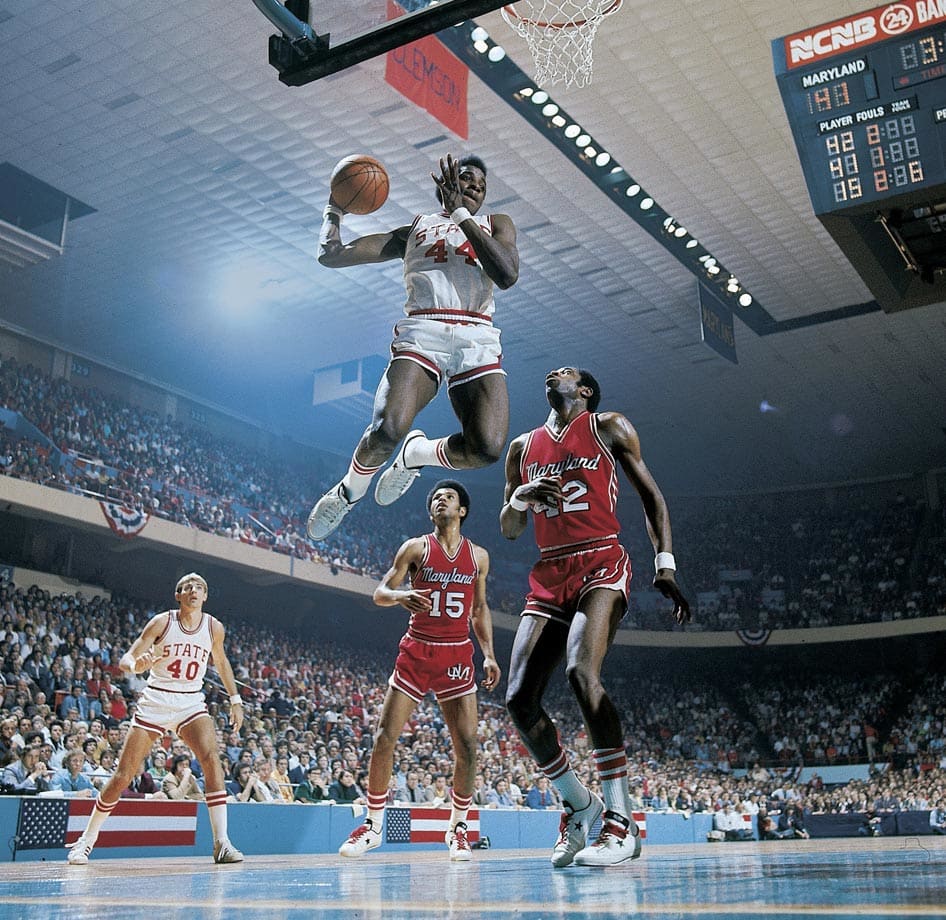
A decade before the world first heard the phrase "Air Jordan," basketball fans were dazzled by "Skywalker" Thompson, who had a 48-inch vertical leap and was on the finishing end of many alley-oops from Monte Towe. Though the dunk was against the rules at the time, Thompson's acrobatics propelled the Wolfpack to the 1974 championship. Their run to the title included an overtime win over No. 4 Maryland, widely considered the greatest game in ACC history, and a double-overtime victory over Bill Walton-led UCLA in the semifinals in which Thompson had 28 points and 10 rebounds. Thompson's Wolfpack might have won two titles if they weren't ineligible in 1973 because of NCAA sanctions.
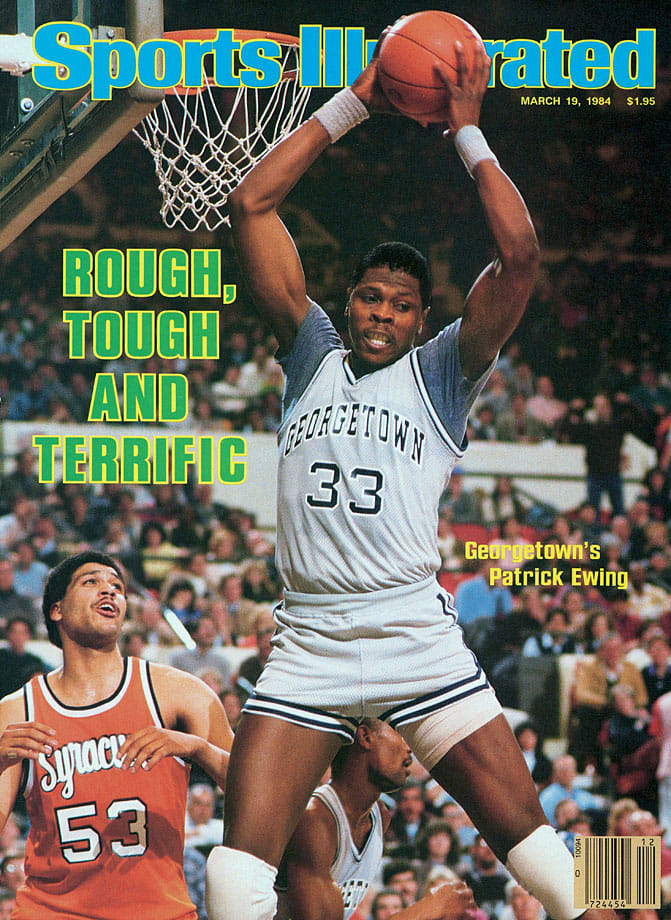
The most intimidating defensive center since Bill Russell, Ewing was a three-time All-America and was the 1985 Naismith Player of the Year. He led the Hoyas to three NCAA championship games. In the 1982 final against North Carolina, Ewing was whistled for goaltending on the Tar Heels' first five possessions. He finished with 23 points and 11 rebounds in the one-point loss. In 1984, he was named the Final Four's Most Outstanding Player as he led the Hoyas past Hakeem Olajuwon's Houston Cougars. Georgetown almost won the next year but was shocked by eighth-seeded Villanova in arguably the biggest upset in NCAA tournament history.
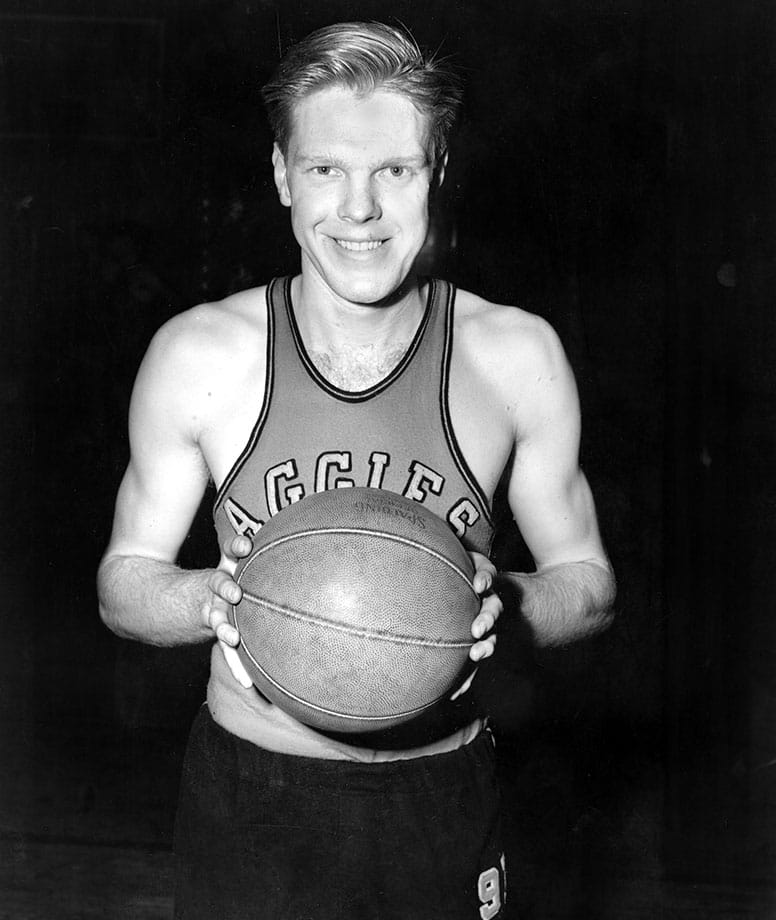
It was very unusual for a team to have a 7-foot player in the mid-1940's, and especially rare for such a big man to be mobile and skilled. Kurland was the anchor of Henry Iba's back-to-back NCAA champions and was a three-time All-America. In his final season he scored nearly 40 percent of his team's points. Kurland was the first player to win back-to-back Most Outstanding Player awards at the Final Four and he was the reason Oklahoma A&M became the first repeat champion.
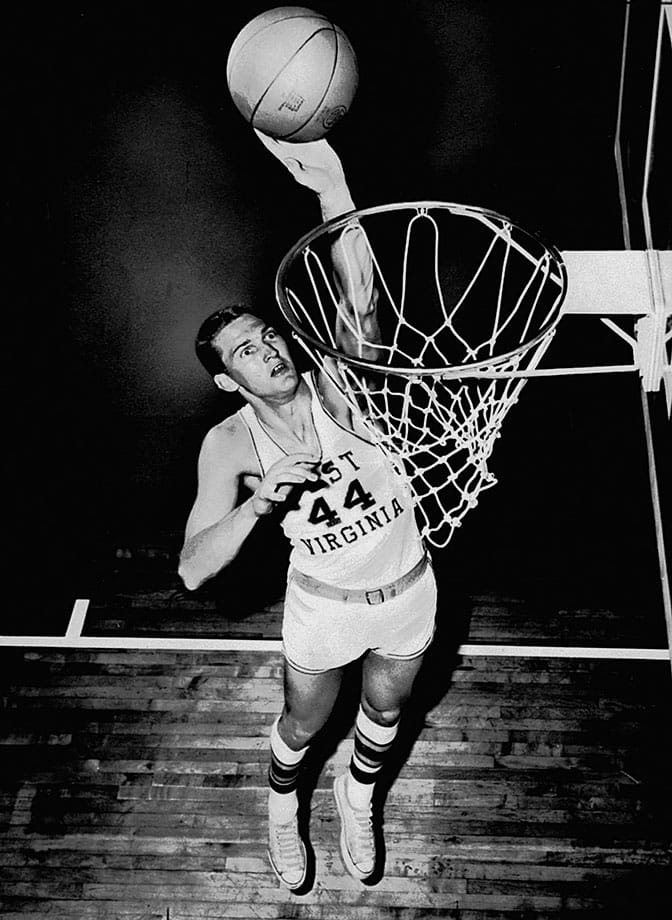
Before his likeness was on the NBA logo, West spent three dominant years at West Virginia. A two-time first-team All-America, West averaged a double-double each season. The Mountaineers lost to Cal in the championship game his junior season despite 28 points and 11 rebounds from West. He was named the Final Four's Most Outstanding Player.
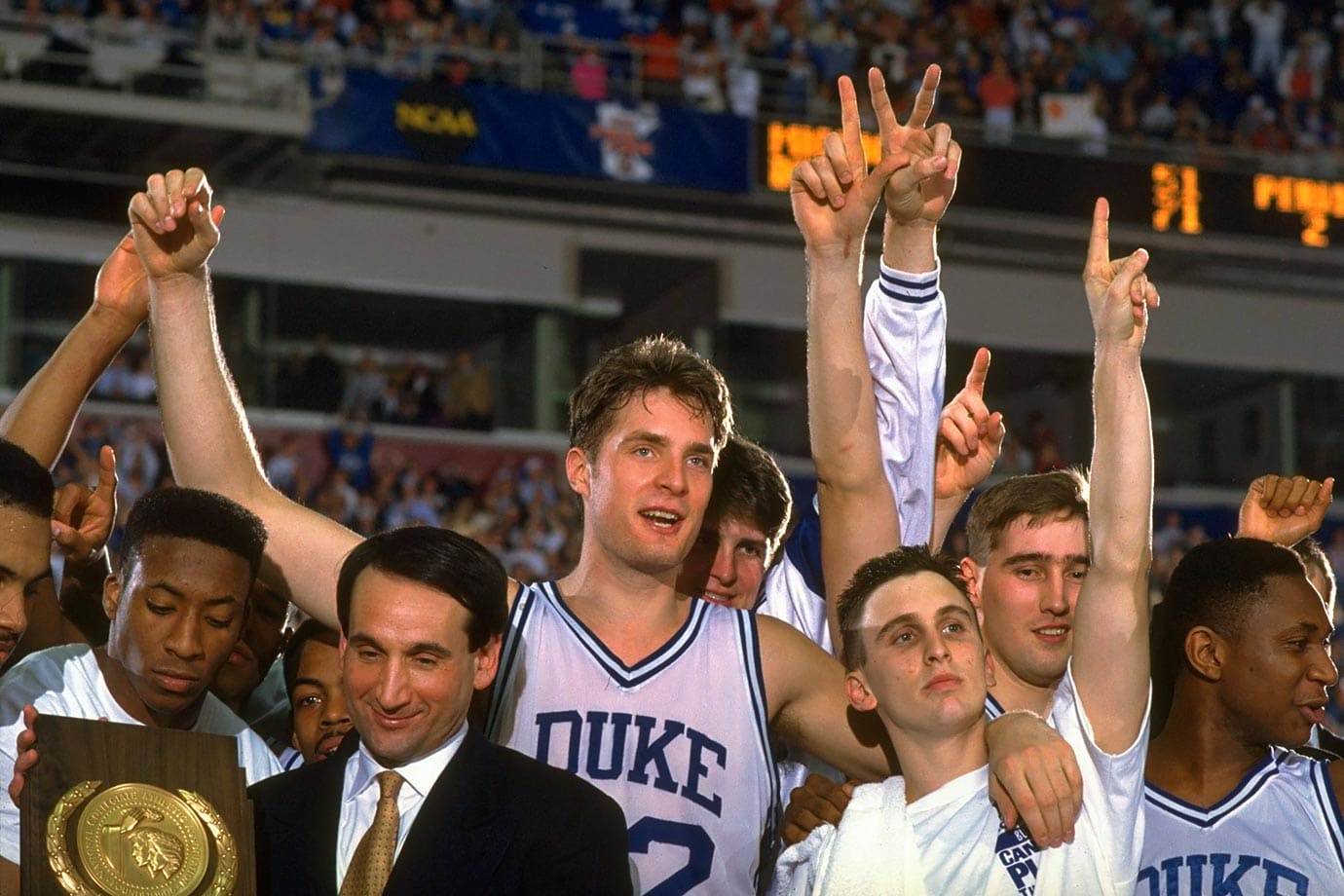
The only player to start in four consecutive Final Four games, Laettner was the spark for a run of incredible Duke teams. After losing in the Final Four and the national championship game in Laettner's first two seasons, the Blue Devils won back-to-back national titles. Laettner carries the unusual distinction of hitting two game-winning buzzer beaters in the 1990 and '92 regional finals. His epic game-winner in the '92 regional final against Kentucky capped off a perfect performance in which he made all 10 of his field goals and all 10 of his free throws. He is the career-leading scorer in tournament history (407 points), but perhaps the most remarkable number of Laettner's career is 23. That's the number of games he played in the NCAA tournament. The maximum for a four-year player is 24.
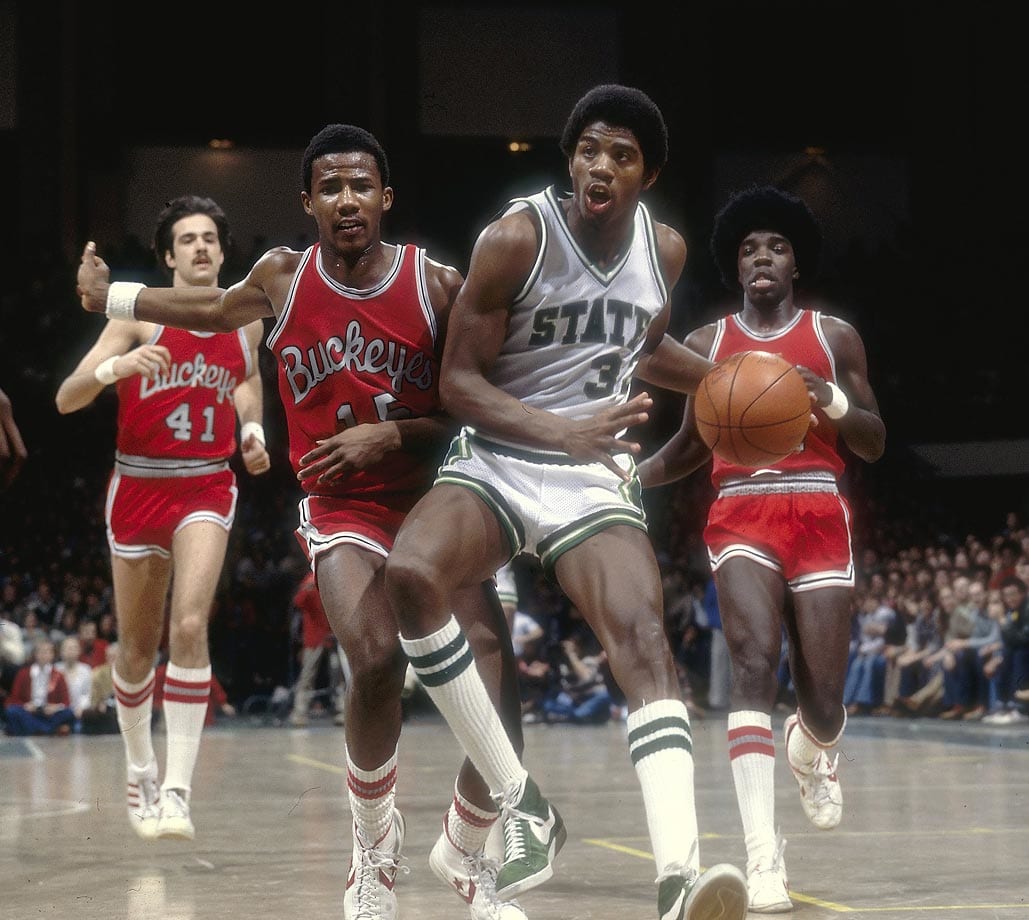
The game had never seen anything like him: A 6-foot-9 point guard who orchestrated the offense more than he executed it. Johnson averaged 17.1 points, 7.6 rebounds and 7.9 assists in his two years with the Spartans, but it was his leadership and charisma that mattered most as he led Michigan State to the 1979 NCAA title. In a showcase that still has the highest Nielsen rating of any basketball game, college or pro, Johnson scored a game-high 24 points to go along with nine assists and eight rebounds to lead Michigan State to a victory over Larry Bird-led Indiana State.
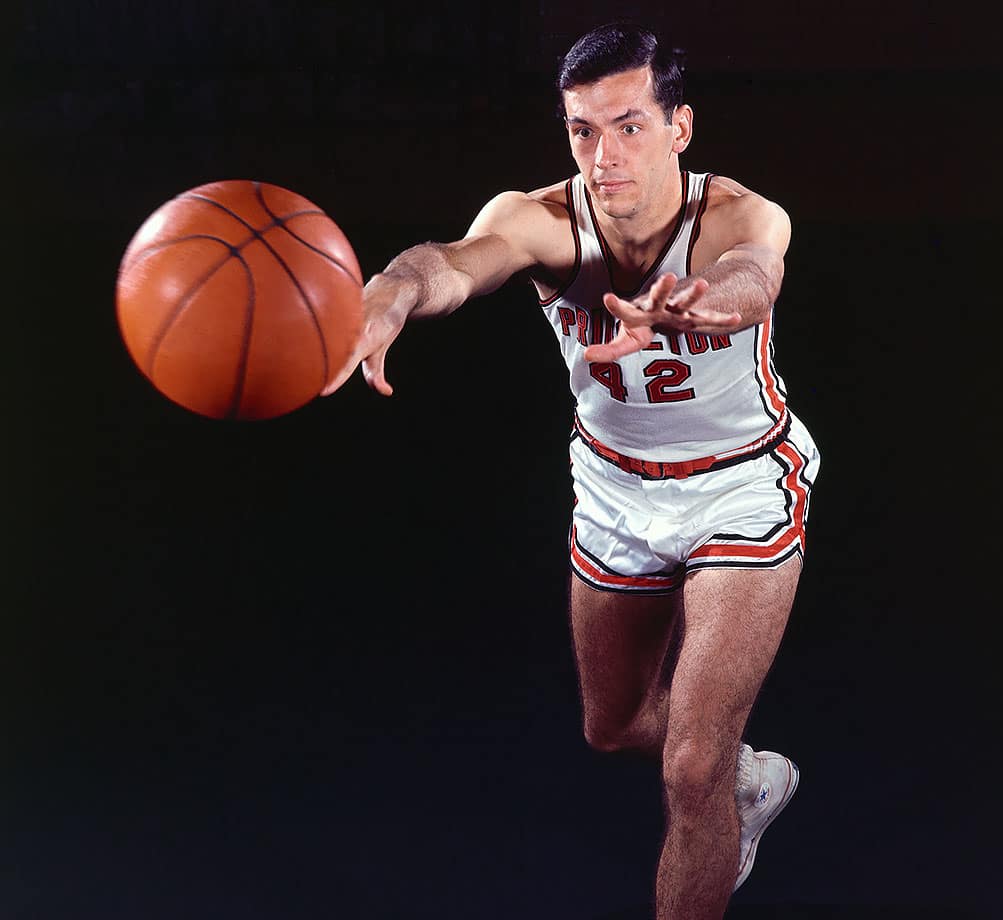
Perhaps the finest scholar-athlete the game has ever seen, Bradley was a two-time first-team All-America and led the Tigers to the Final Four his senior year before accepting a Rhodes Scholarship. He holds the Ivy League record for scoring with 29.8 points per game and the top 11 single-game scoring marks at Princeton, led by his 58 points against Wichita State in the 1965 NCAA tournament consolation game. Even though Bradley did not play in the final, he was named the Final Four's Most Outstanding Player.
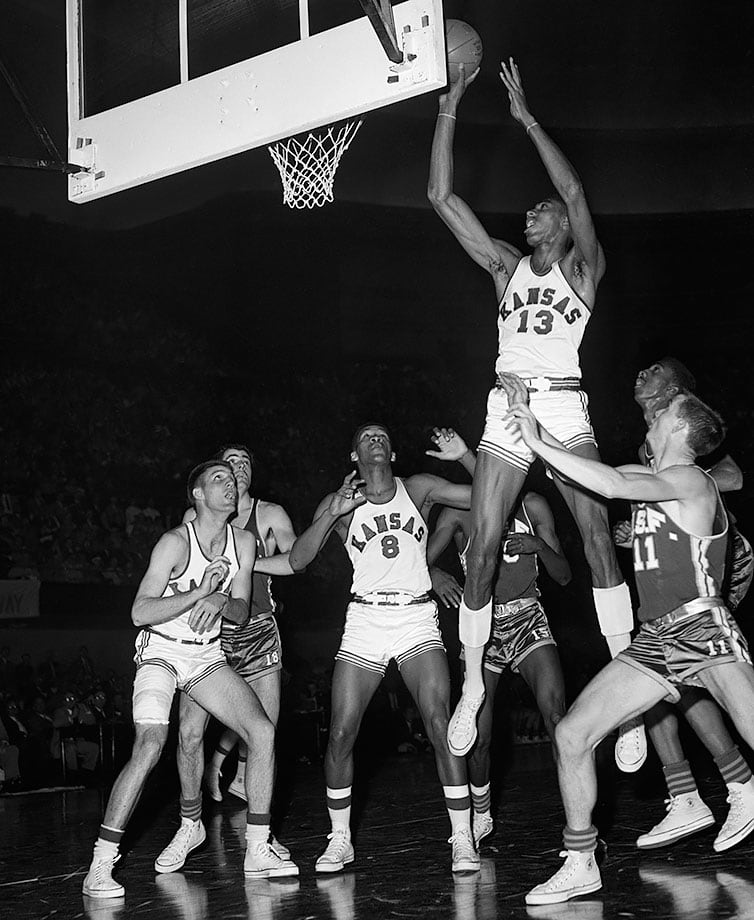
Chamberlain's skill was readily apparent from the moment he stepped foot in Lawrence. Chamberlain scored 42 points with 29 rebounds and four blocks for the freshman team playing against the Kansas varsity team. Playing his first game for the varsity the next year, he scored 52 points and grabbed 31 rebounds, a record for a player in his college debut. Chamberlain was so dominant that teams intentionally slowed the game down during his junior season and frequently triple-teamed him. He still managed to carry the Jayhawks to the championship game in 1957, scoring 23 points and 14 rebounds despite regular triple-teams in Kansas' 54-53 triple-overtime loss to North Carolina.
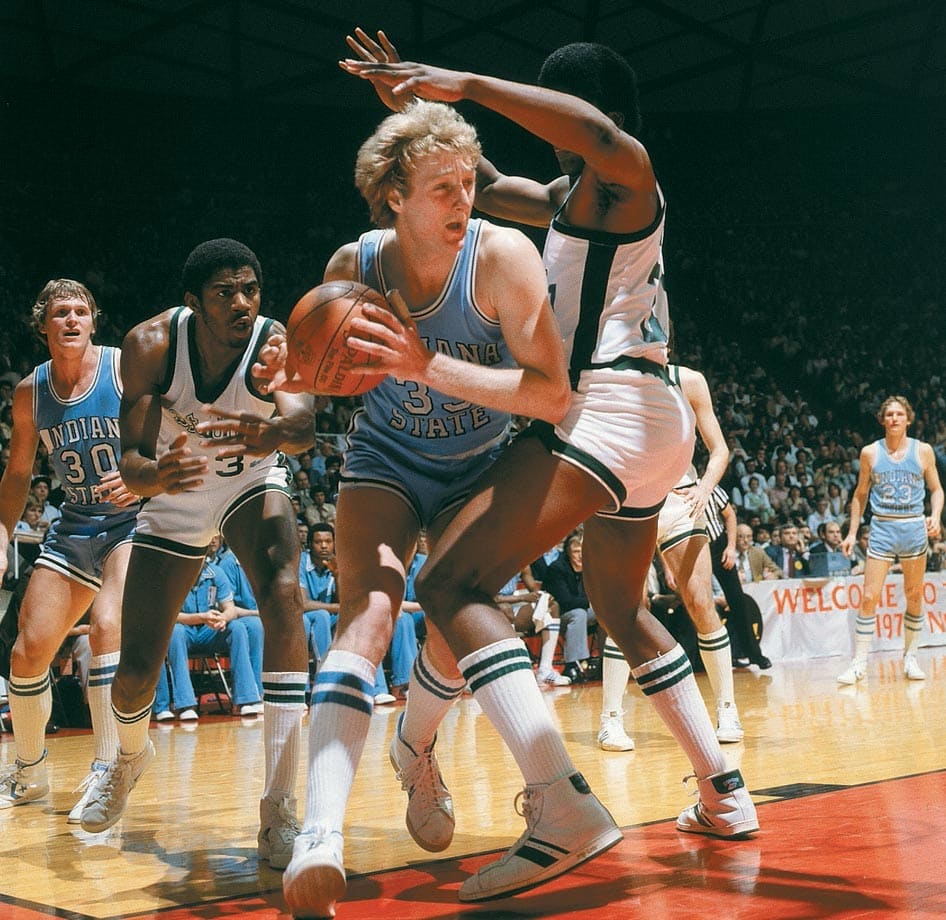
After accepting a scholarship to play for Bob Knight at Indiana, Bird dropped out after 24 days because he was overwhelmed by the size of the school. A year later he enrolled at Indiana State, a school that had never been to the NCAA tournament before. In the semifinal against DePaul, Bird had 35 points, 16 rebounds and nine assists. Bird won the Wooden and Naismith awards his senior season and led the Sycamores to the national championship game. His 2,850 points remain 13th most all-time and seventh most among players with at least 1,000 career rebounds.
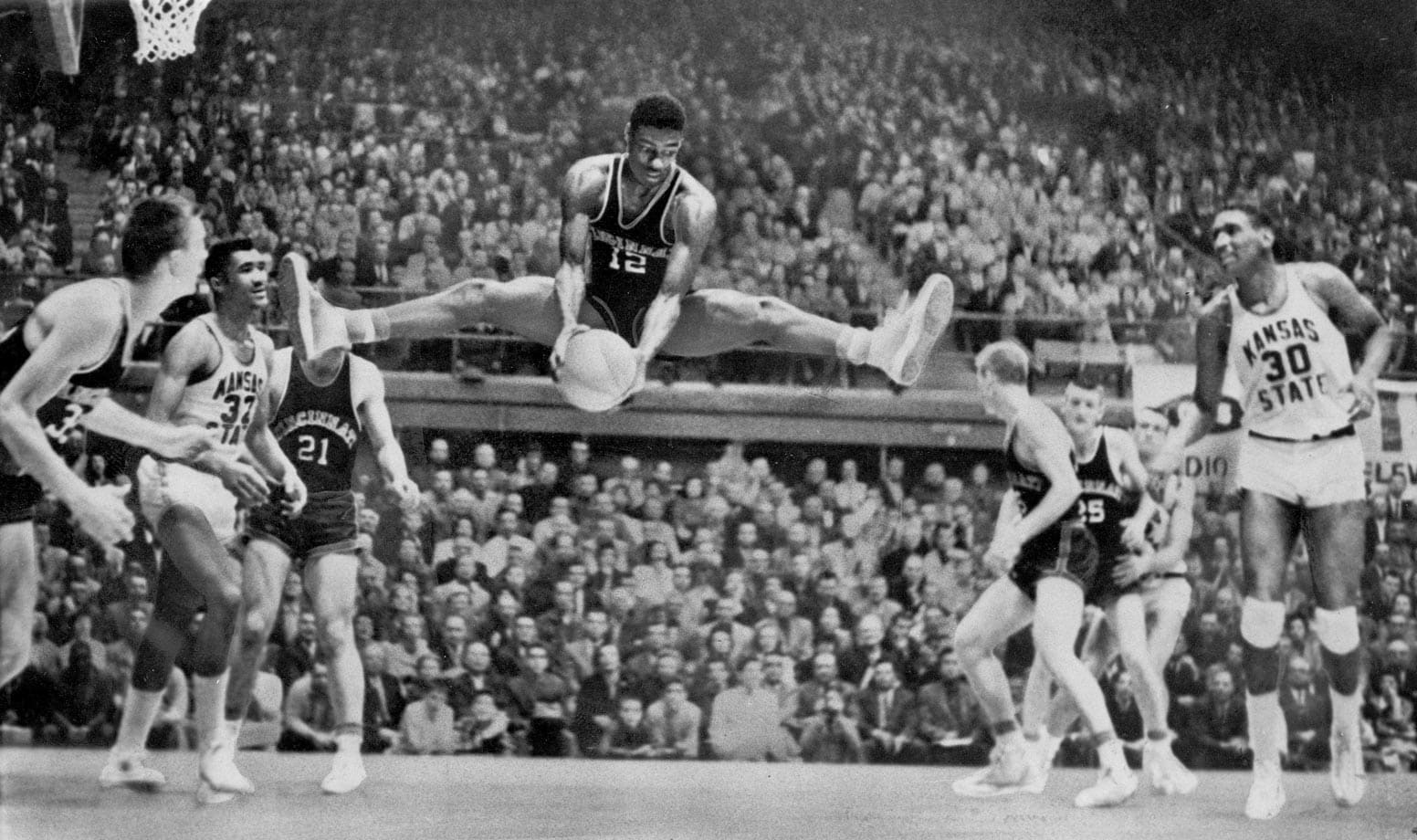
A scoring machine, Oscar Robertson led the nation in points in each of his three years at the varsity level and his 33.8 career points per game is third highest in history. Robertson led Cincinnati to back-to-back Final Fours in his junior and senior years, and the Bearcats lost just six games during that span. Individually, Robinson left college as the NCAA's all-time leading scorer, a record he held until Pete Maravich topped him. Robertson also won the USBWA's NCAA Division I Player of the Year Award in 1959 and 1960, the first two years it was given out. The award has since been renamed the Oscar Robertson Trophy.
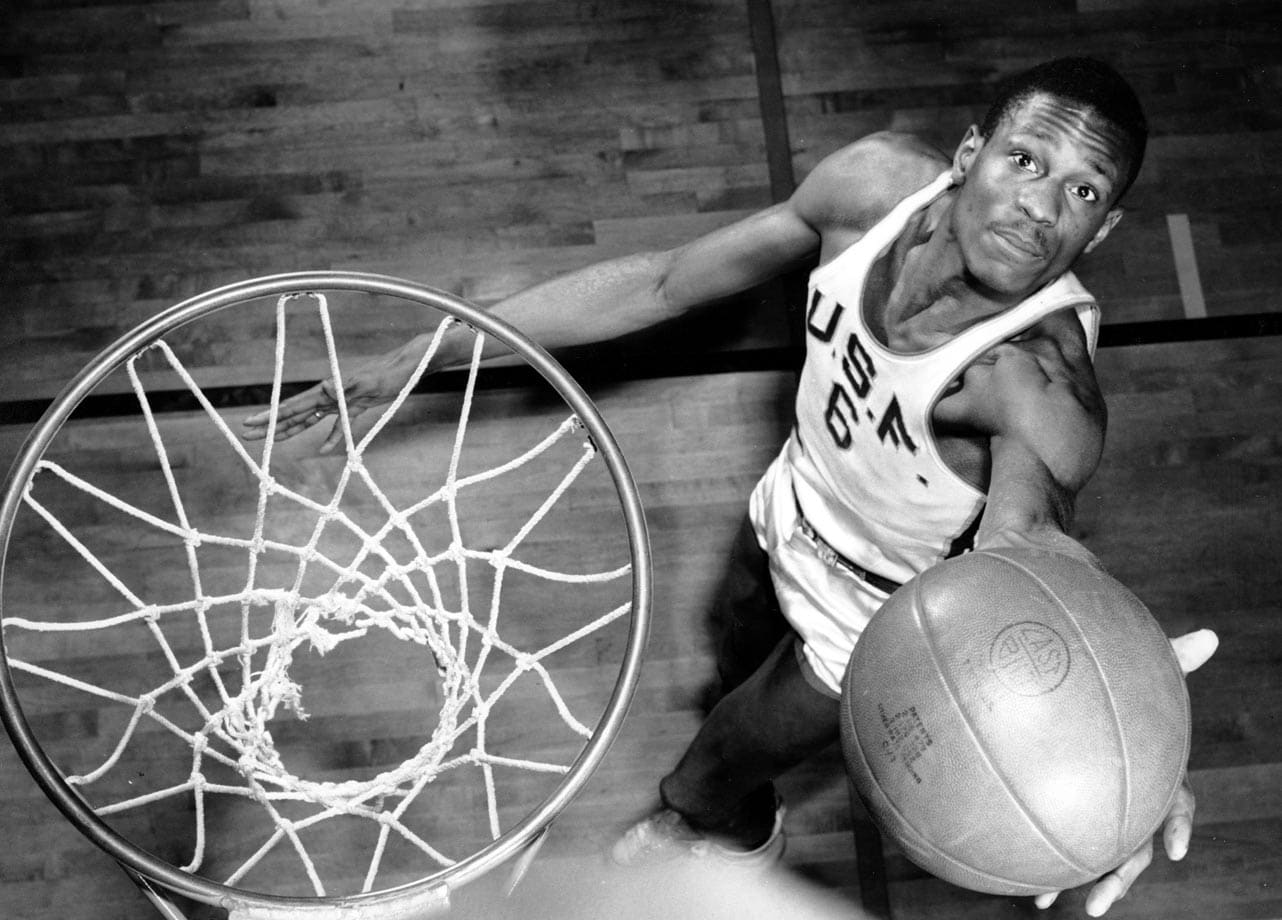
He was so dominant as a sophomore that the rules committee widened the lane from six to 12 feet to limit him. No matter. During his last two seasons at San Francisco, Russell led the Dons to a 57-1 record with back-to-back national titles and an NCAA record 60-game winning streak. Russell was at his best during the 1956 season, when he averaged more than 20 points and 20 rebounds per game. He ended the season by grabbing 27 rebounds in the 1956 NCAA final against Iowa.
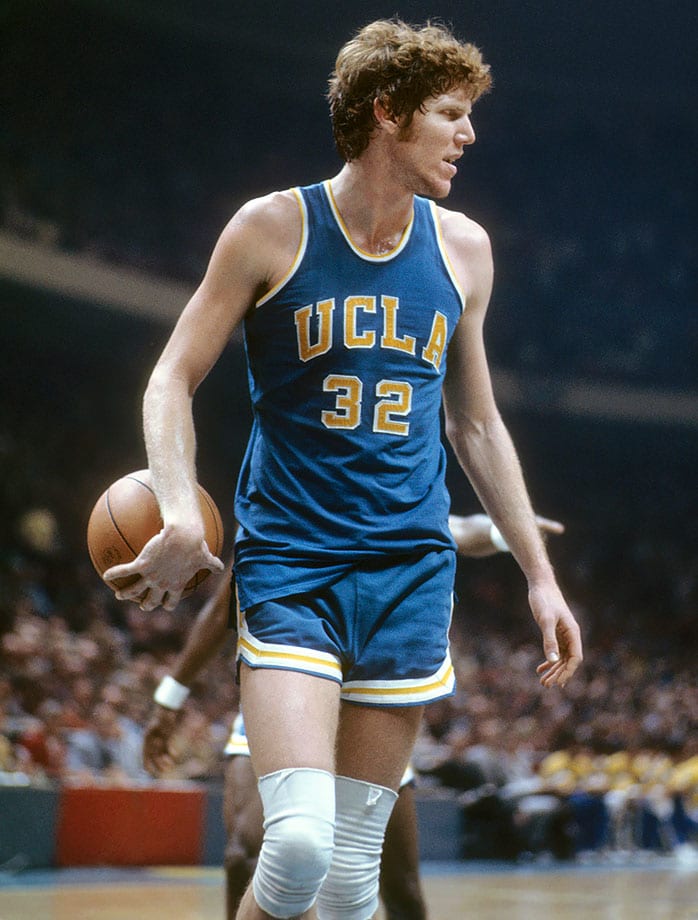
Walton was perhaps the best-passing big man in history. He served as the lynchpin of two NCAA championship teams as well as the 1974 semifinalist that lost to eventual champ N.C. State in overtime. Walton also turned in arguably the best single-game performance in tournament history when he scored 44 points on 21-of-22 shooting in the 1973 final against Memphis. Walton's Bruins also set two NCAA records that still stand: most consecutive games won (88) and average margin of victory (30.1 points).
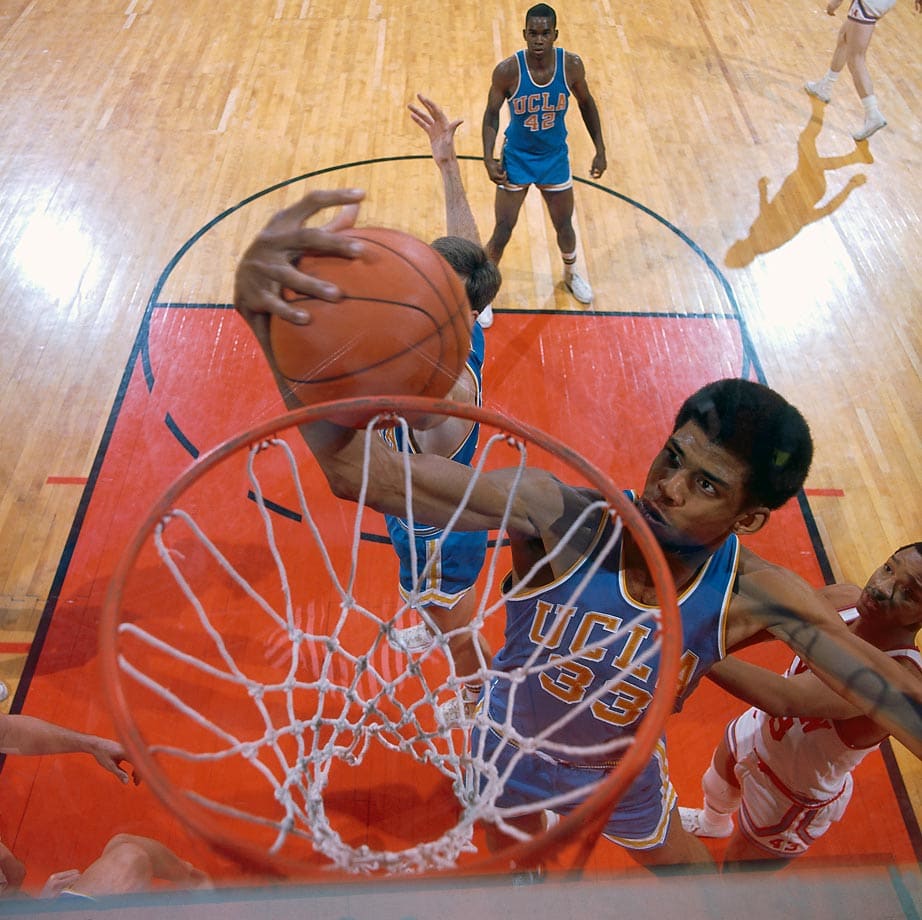
Simply put, Alcindor is the most gifted, complete and decorated player in college basketball history. During his three years at UCLA, Alcindor lost just two games, both by a single basket. He led the Bruins to an unprecedented three consecutive NCAA championships. The only reason they didn't win a fourth was that freshmen were ineligible when Alcindor first came to Westwood. In his six Final Four games, Alcindor averaged 25.7 points and 18.8 rebounds, and he remains the only player to be named Most Outstanding Player at the Final Four three times.
